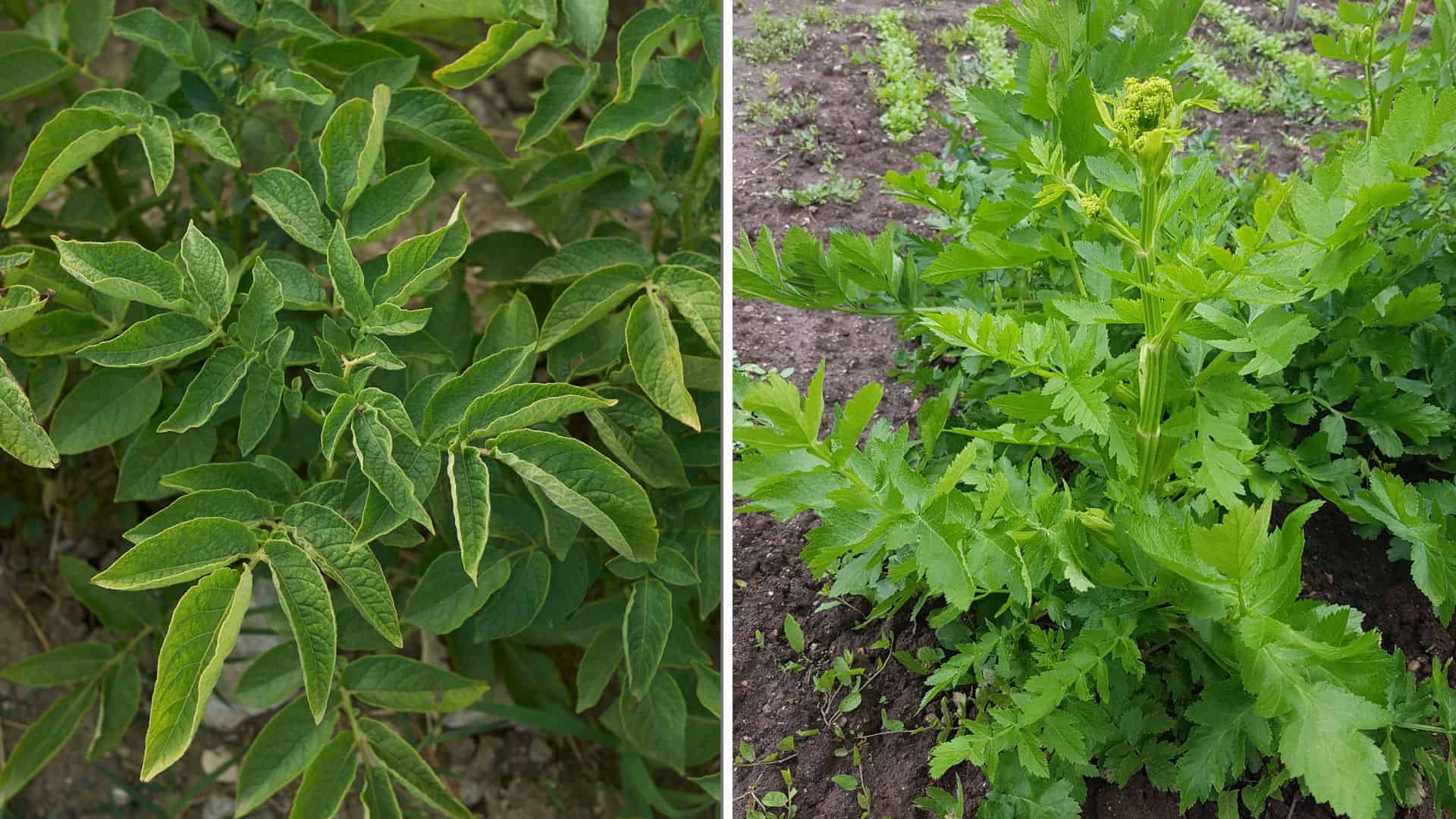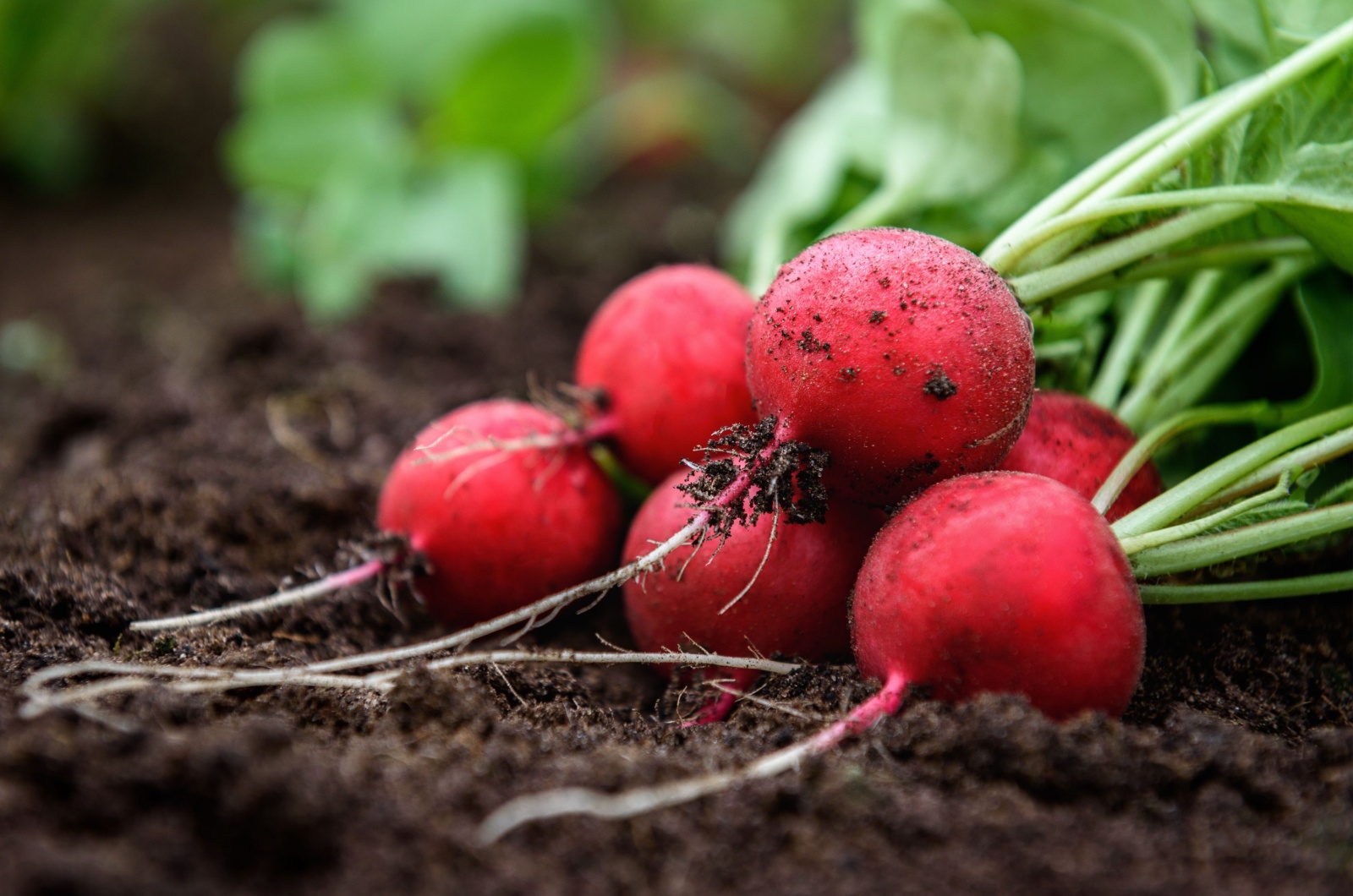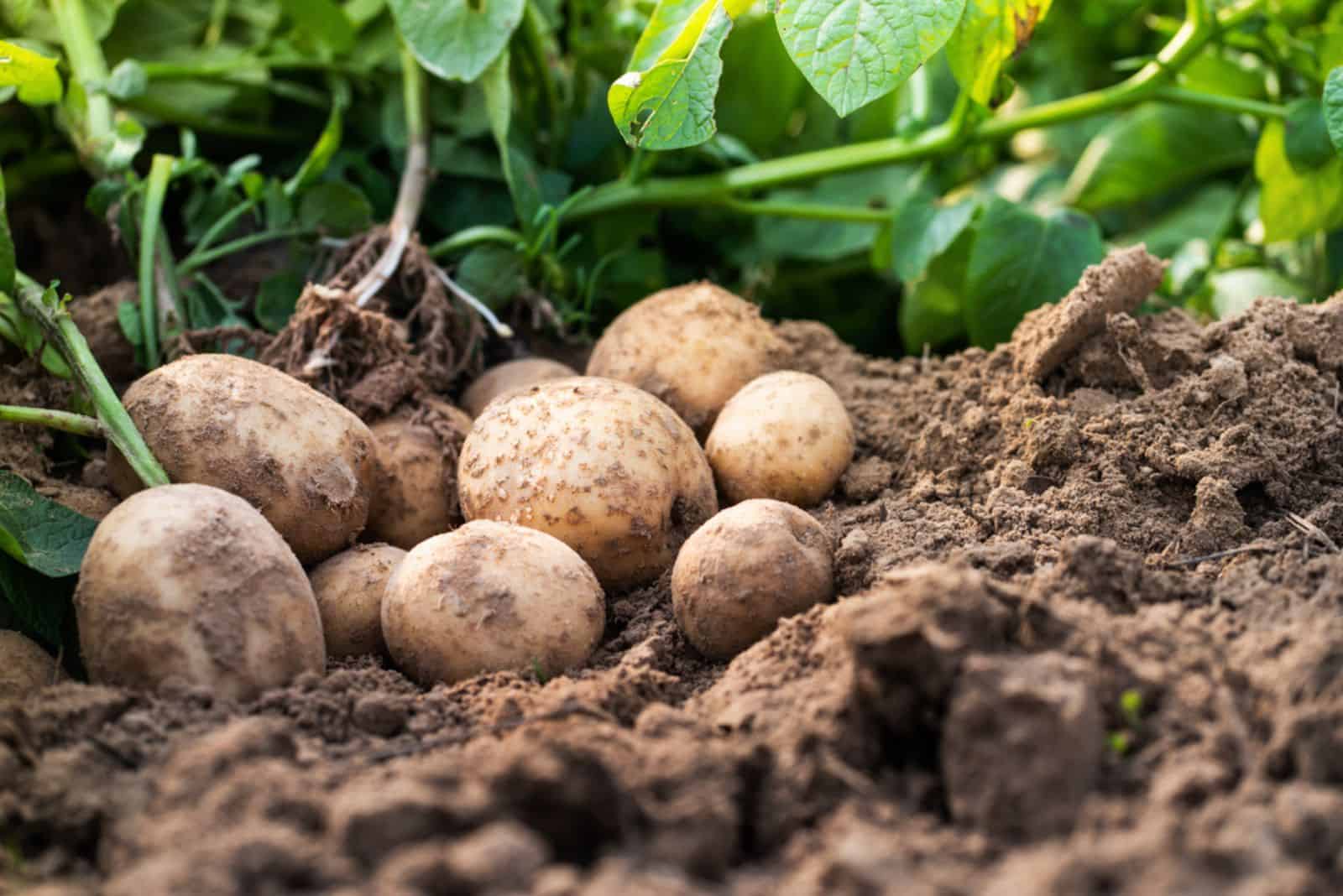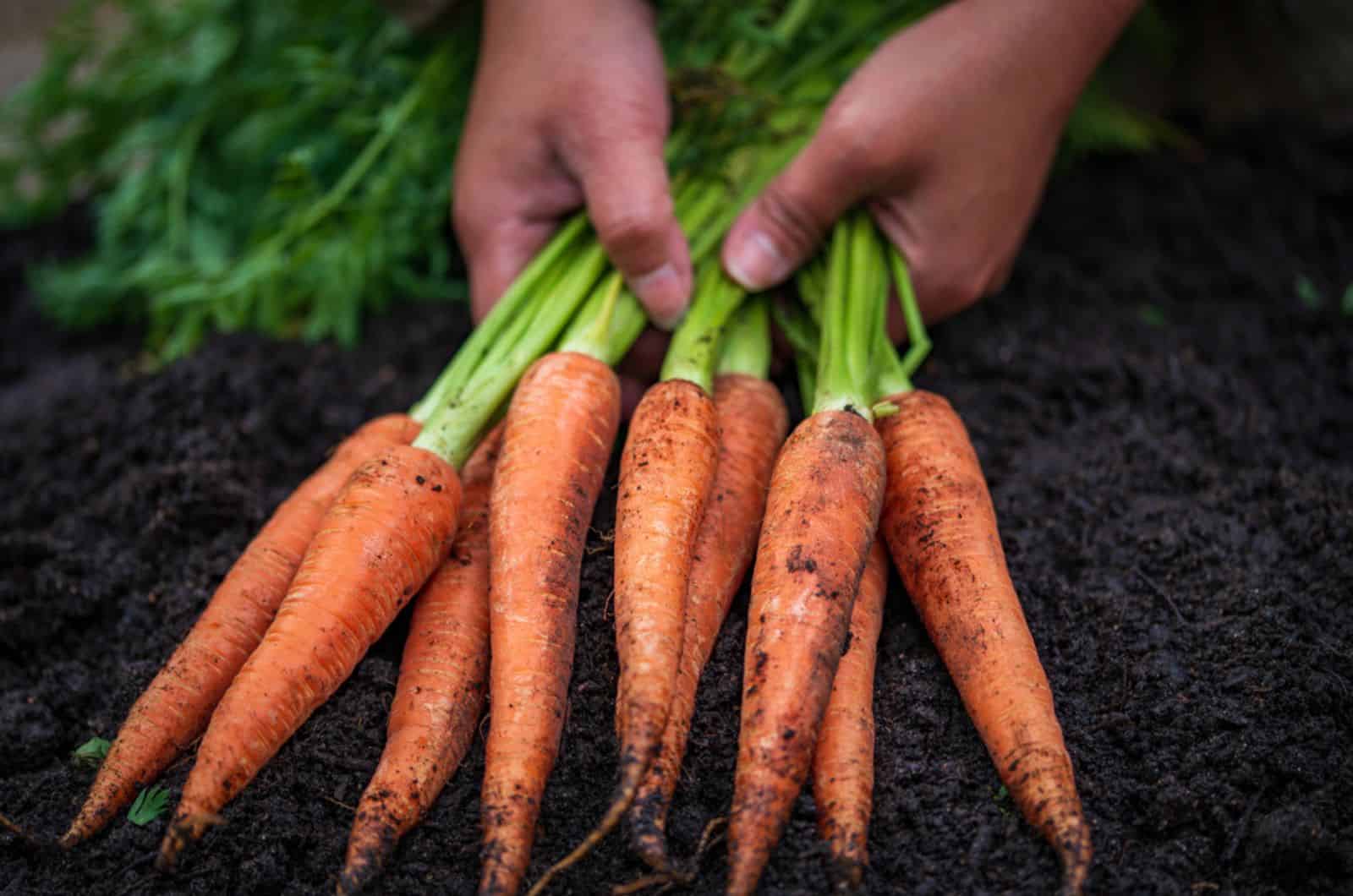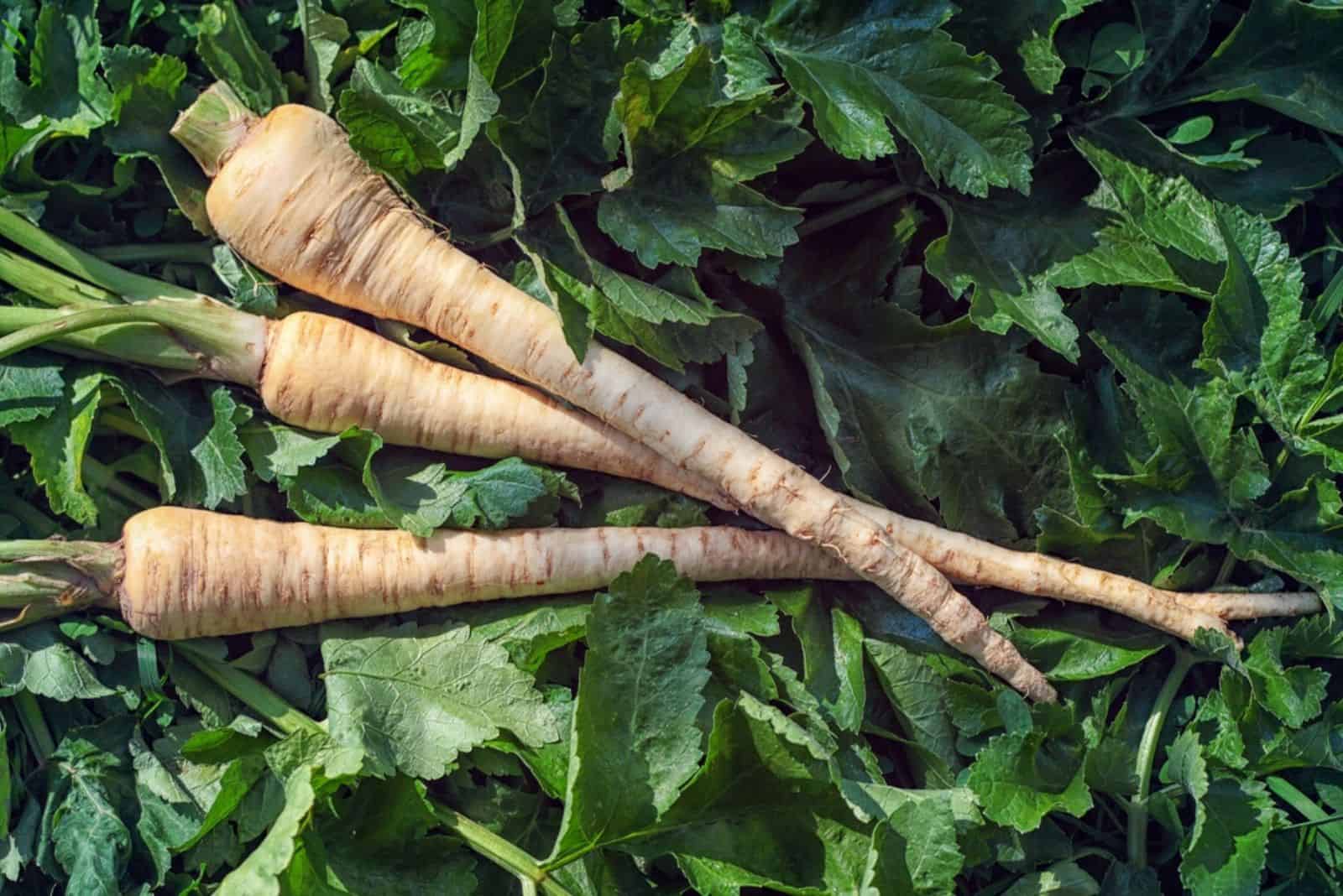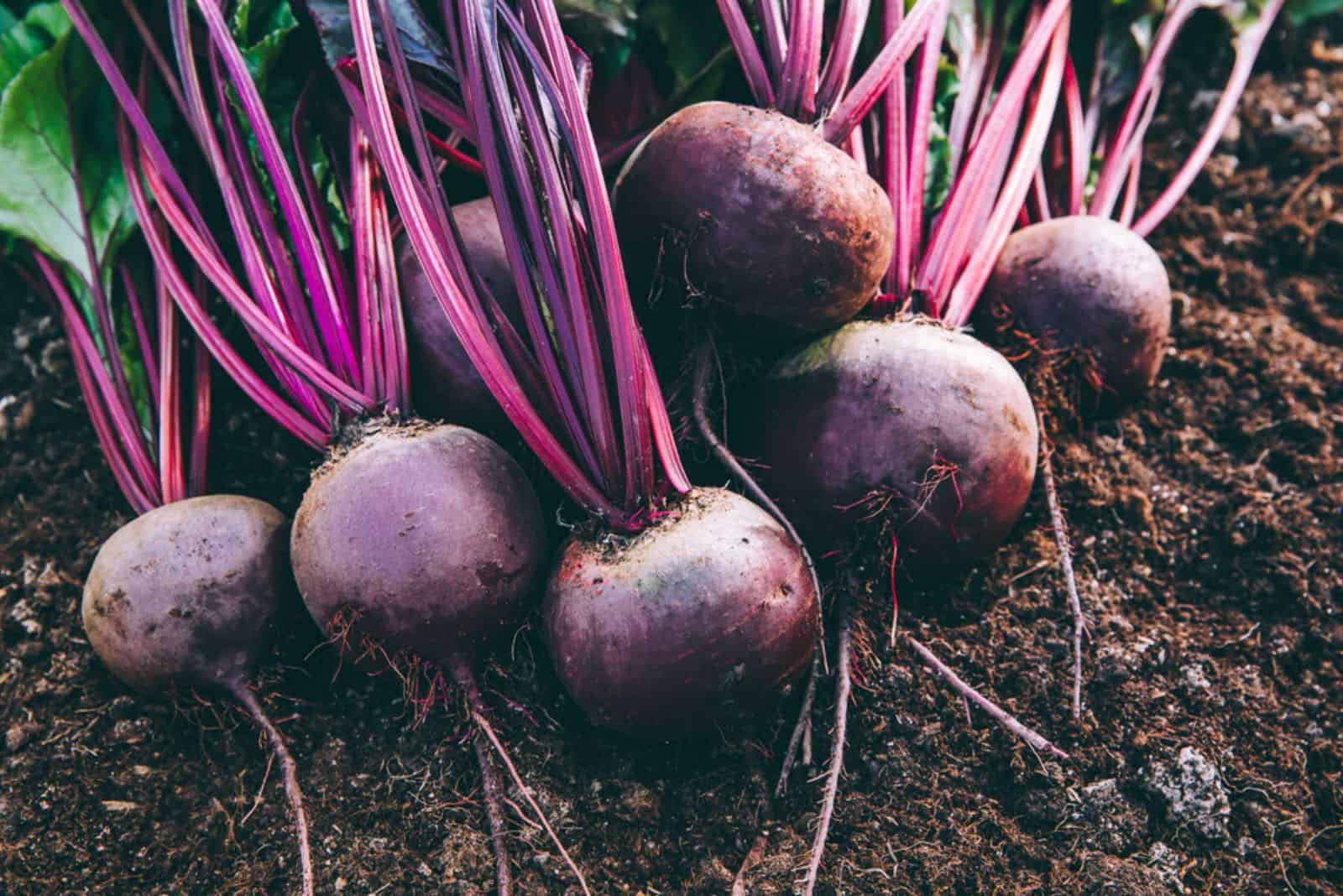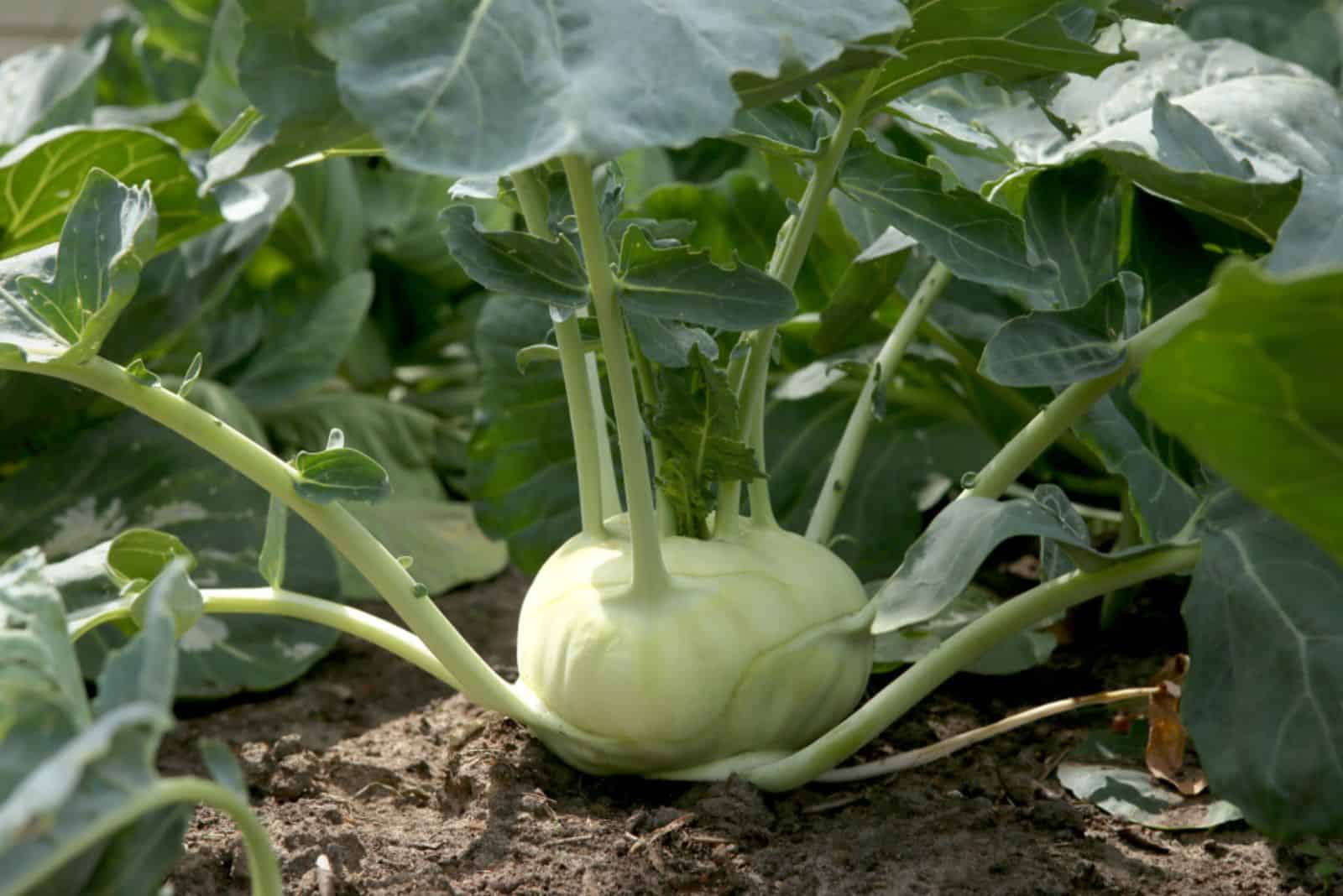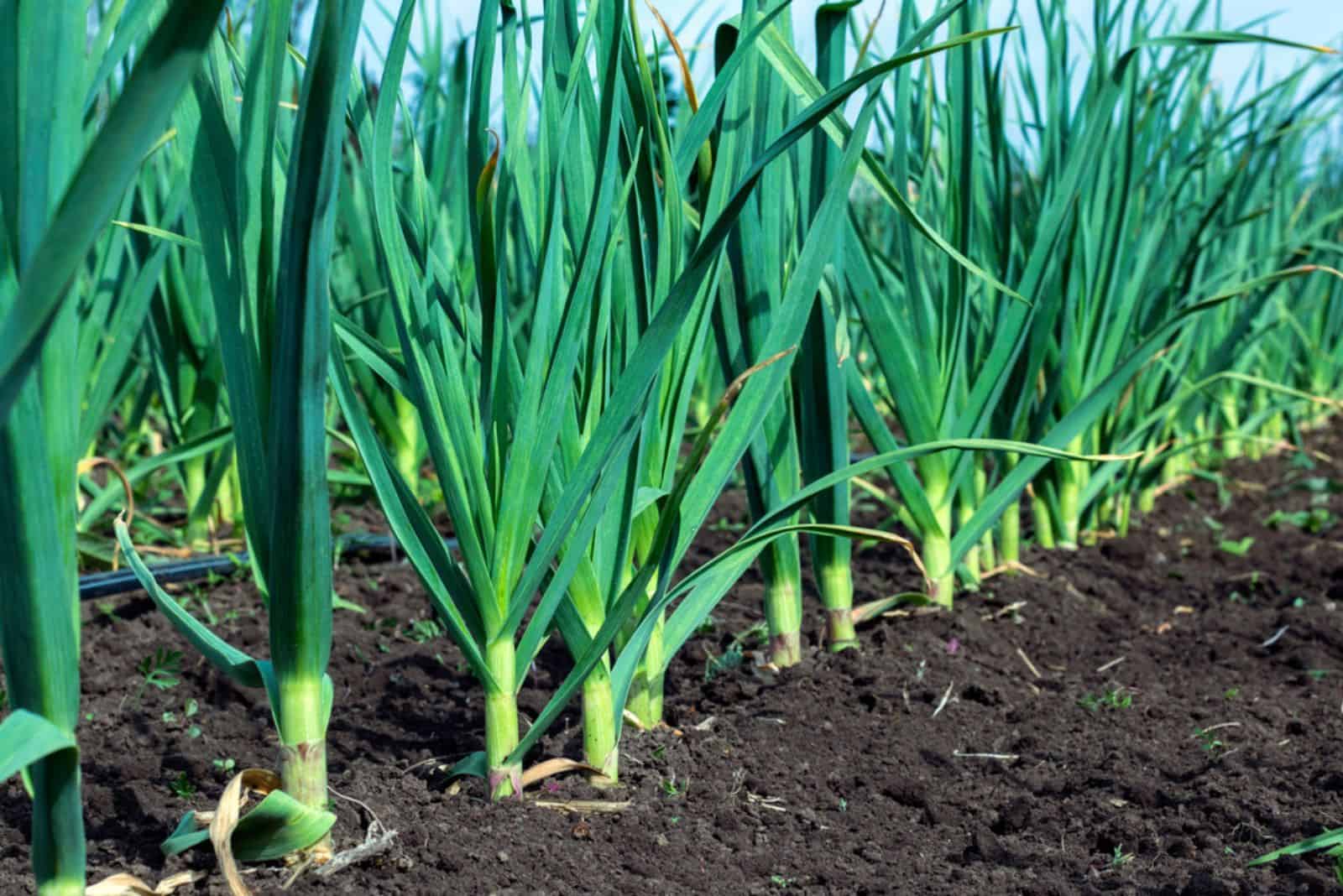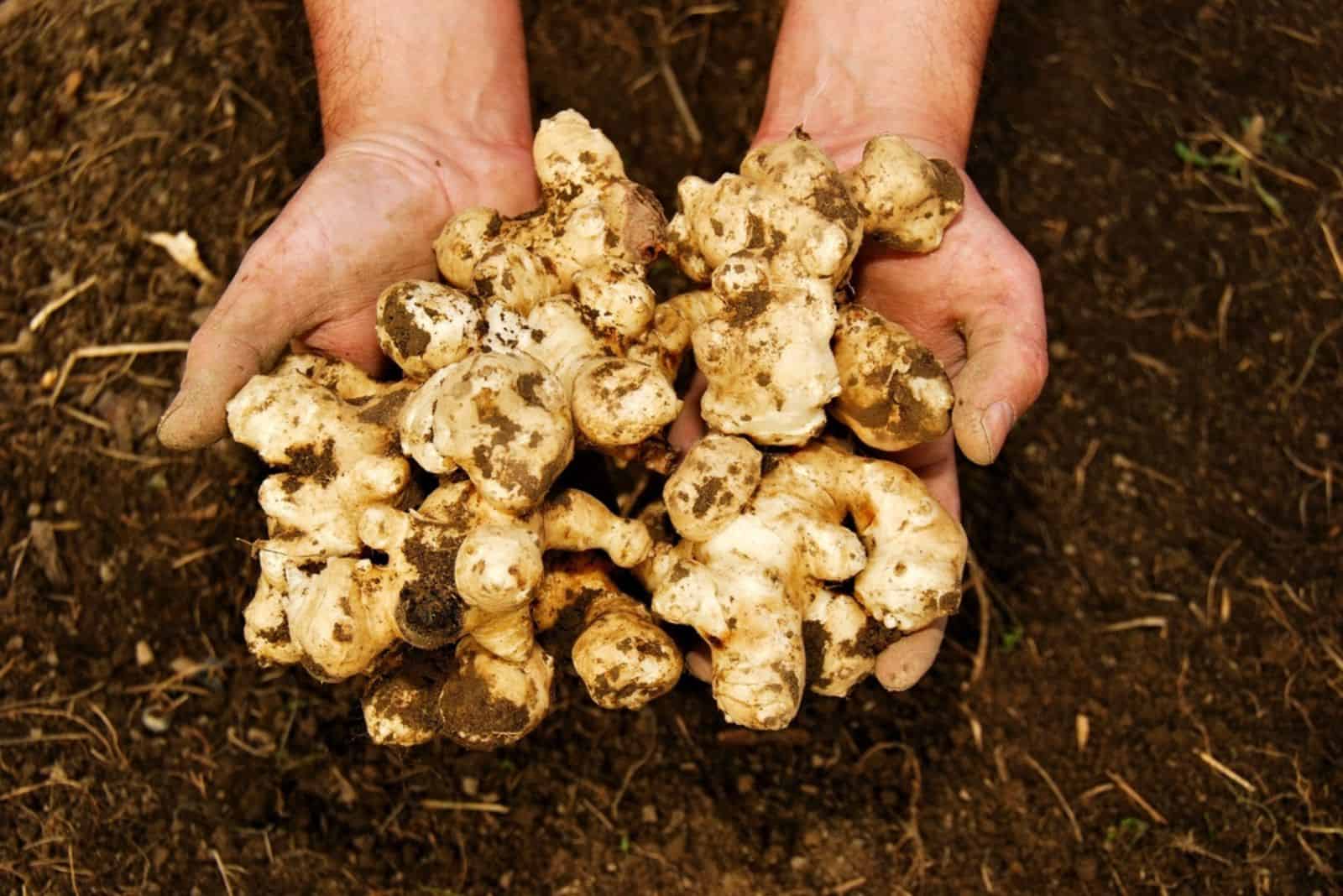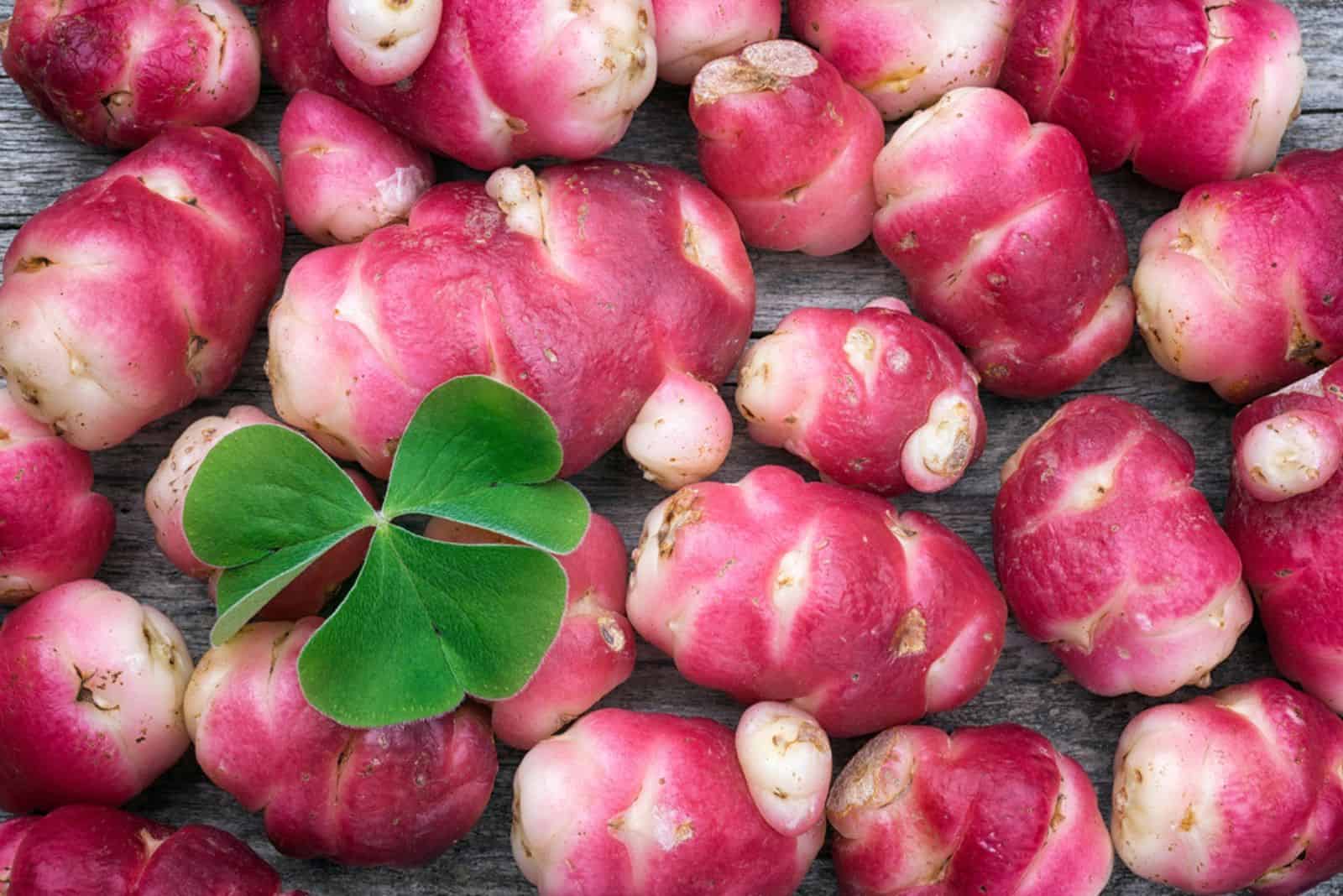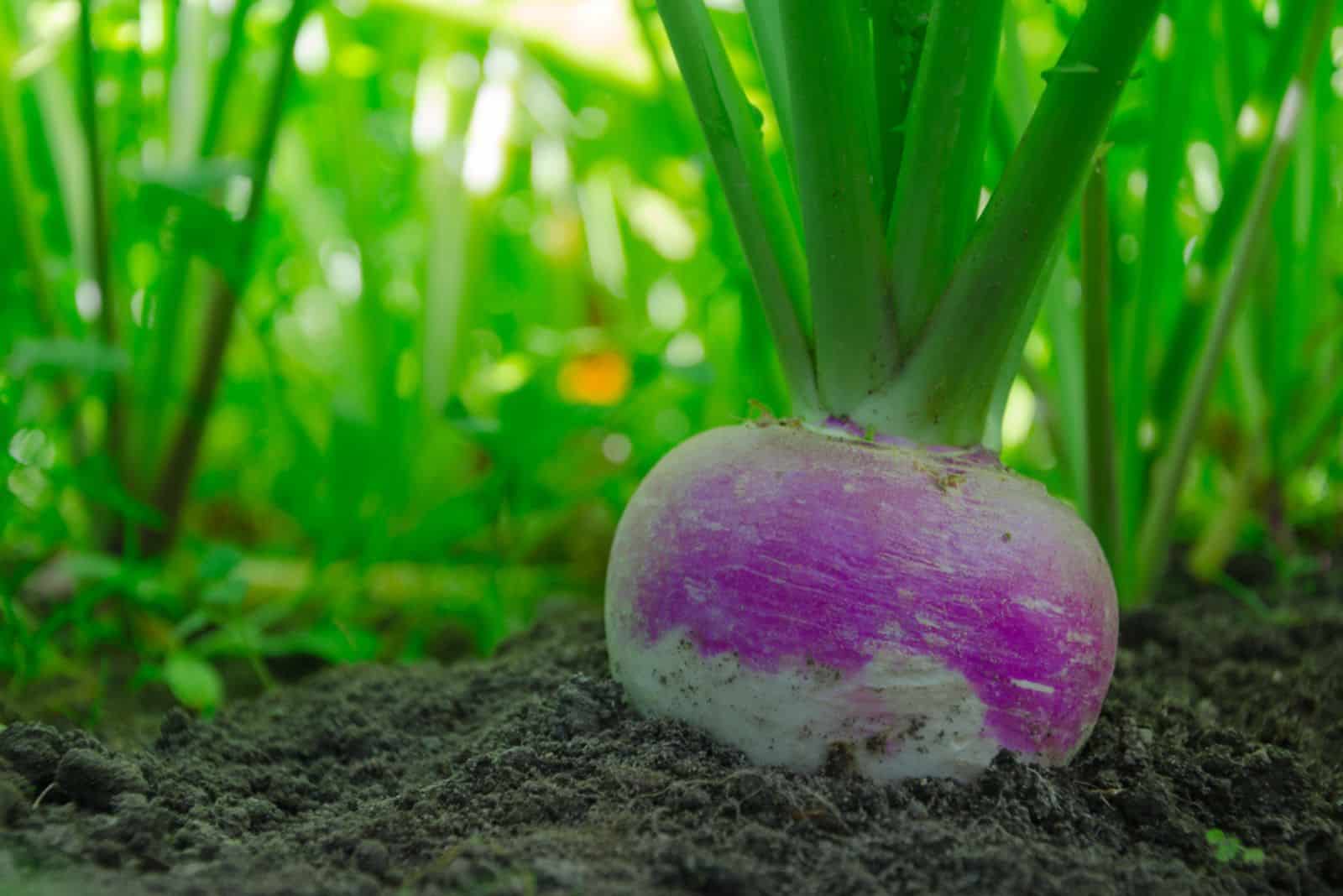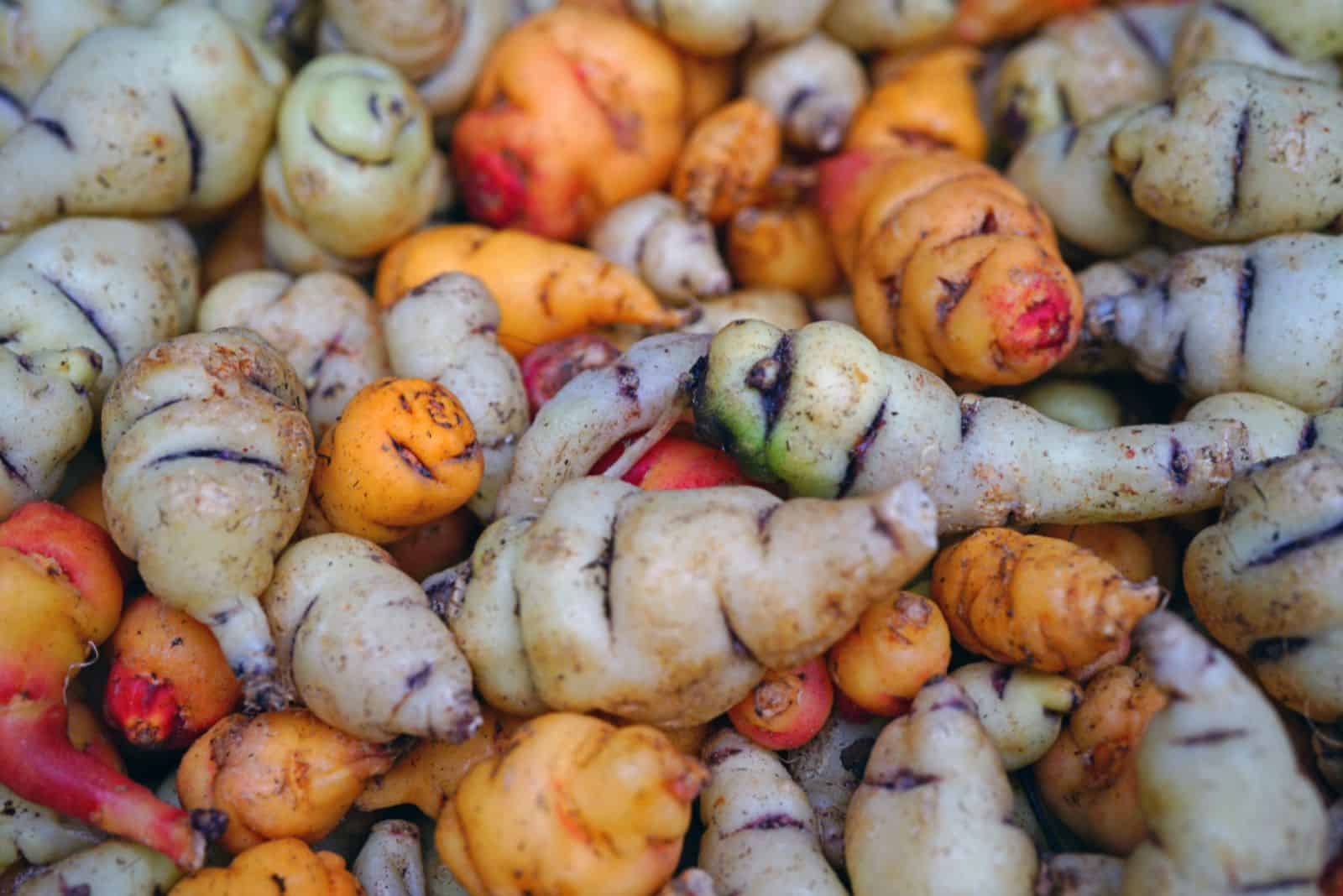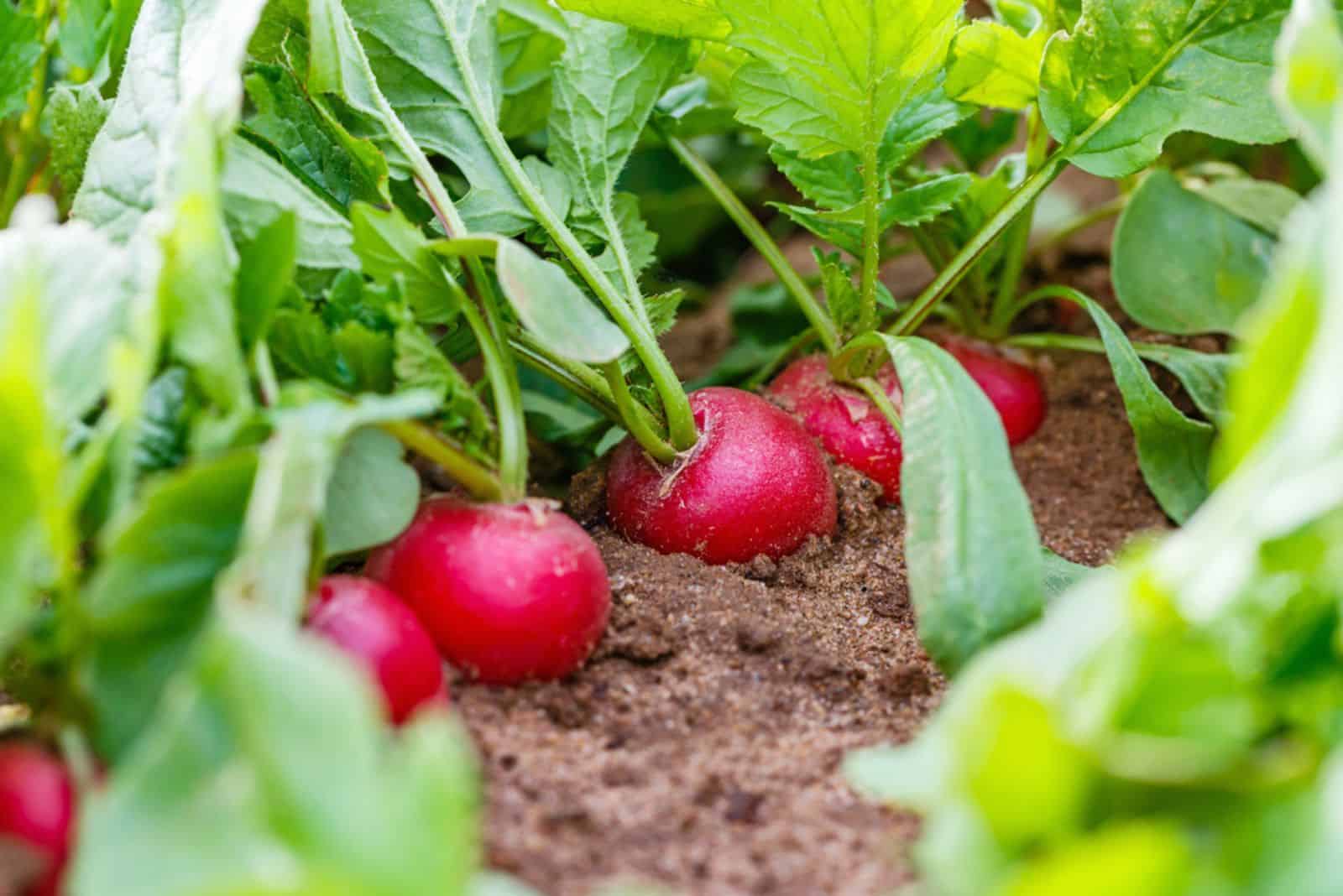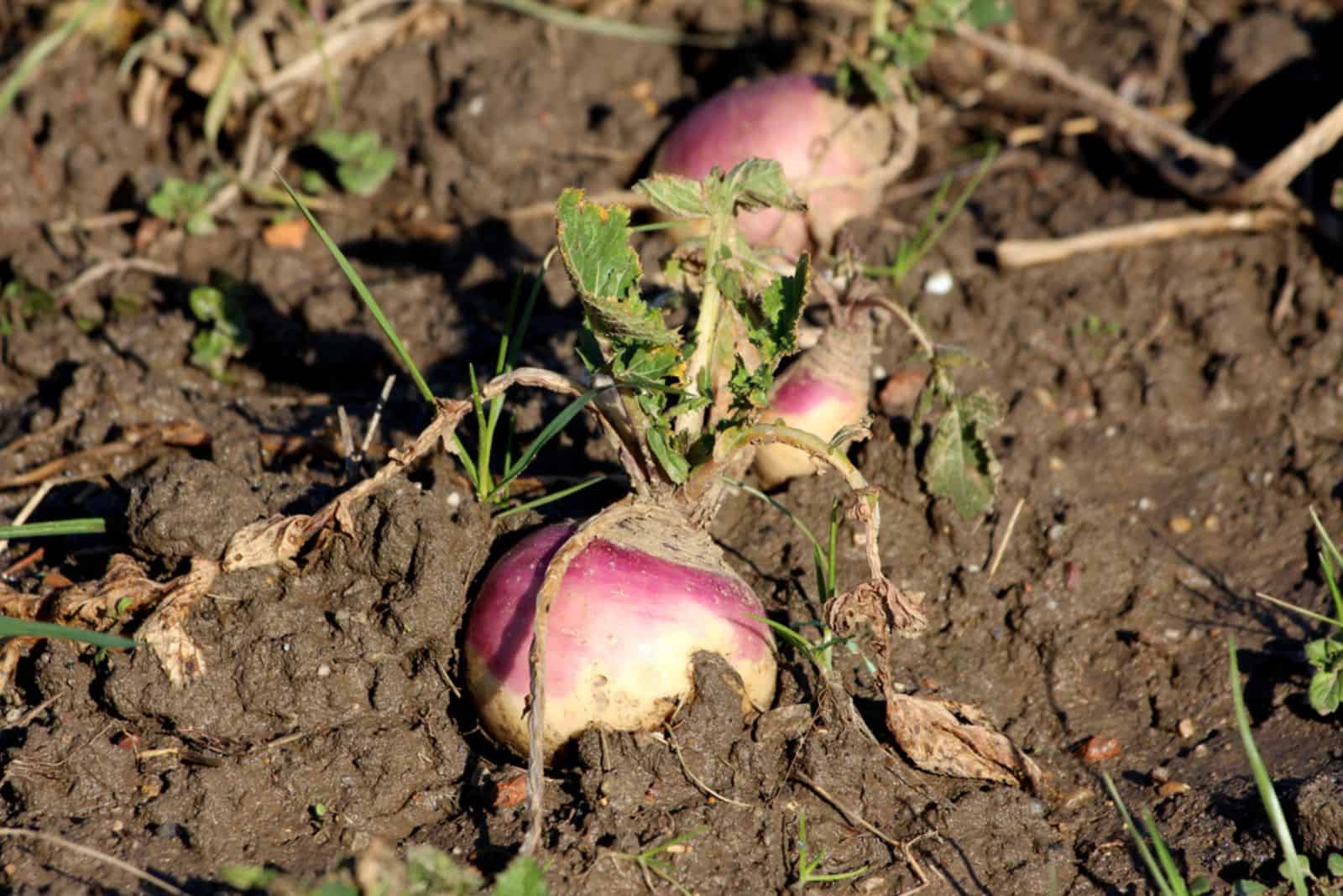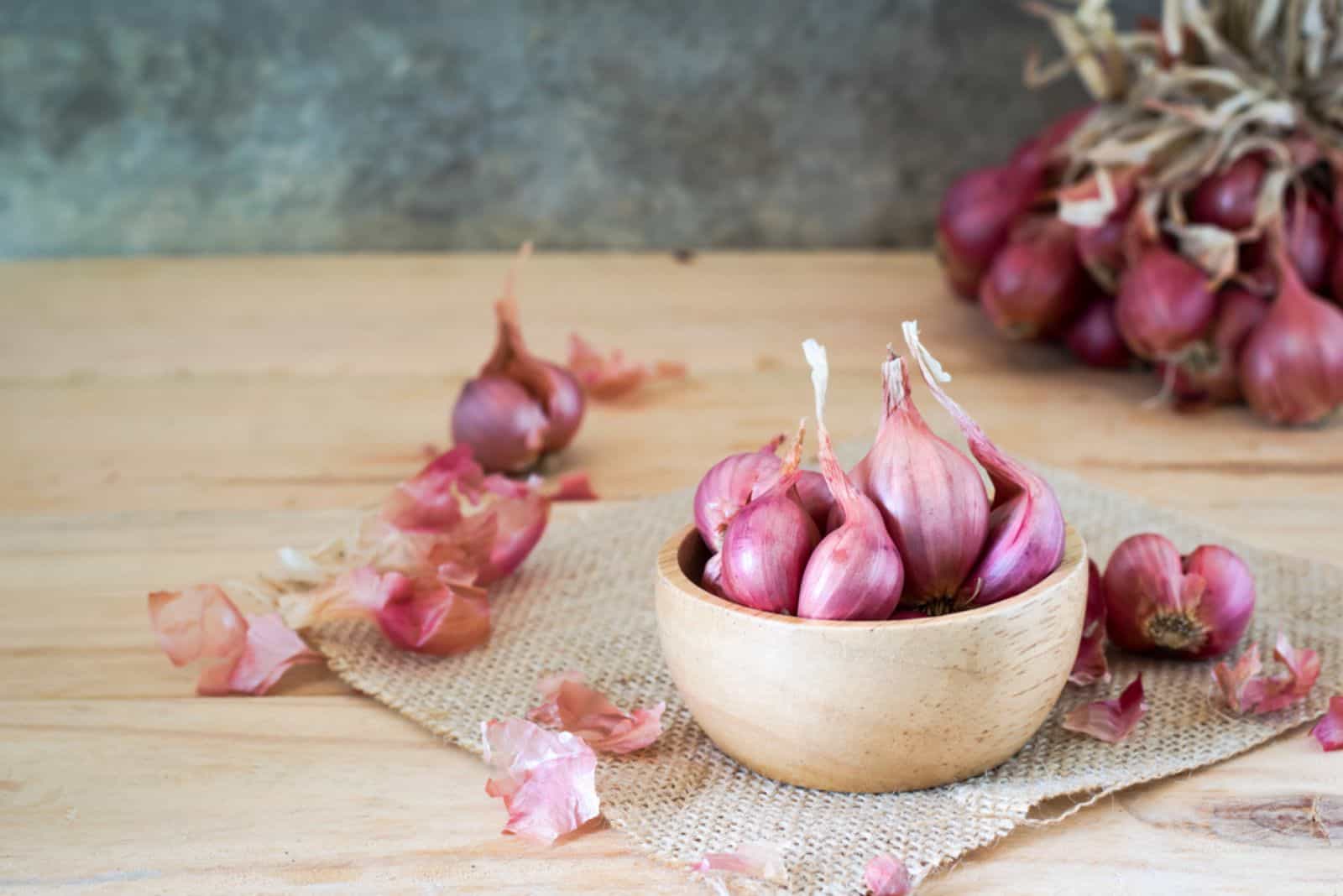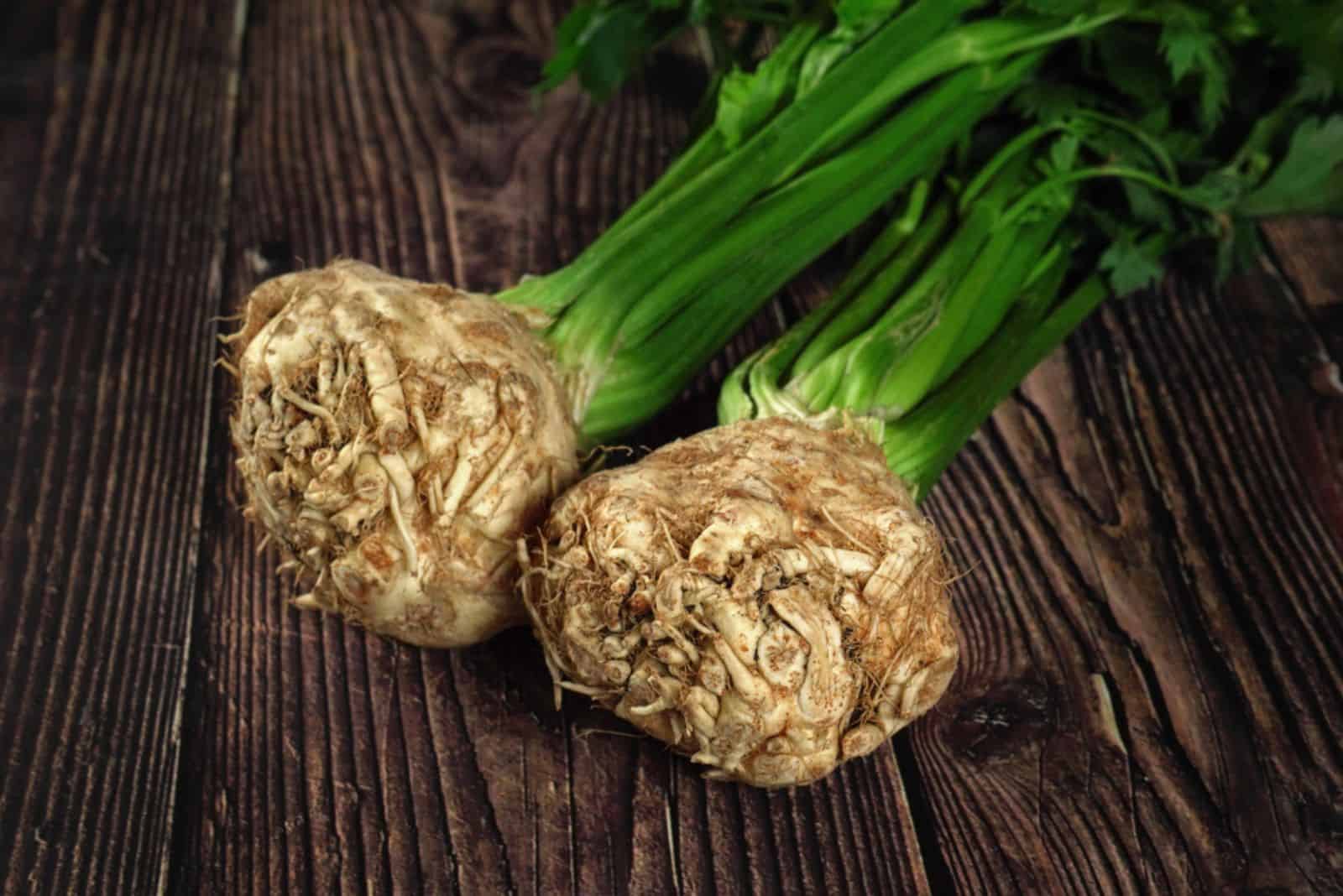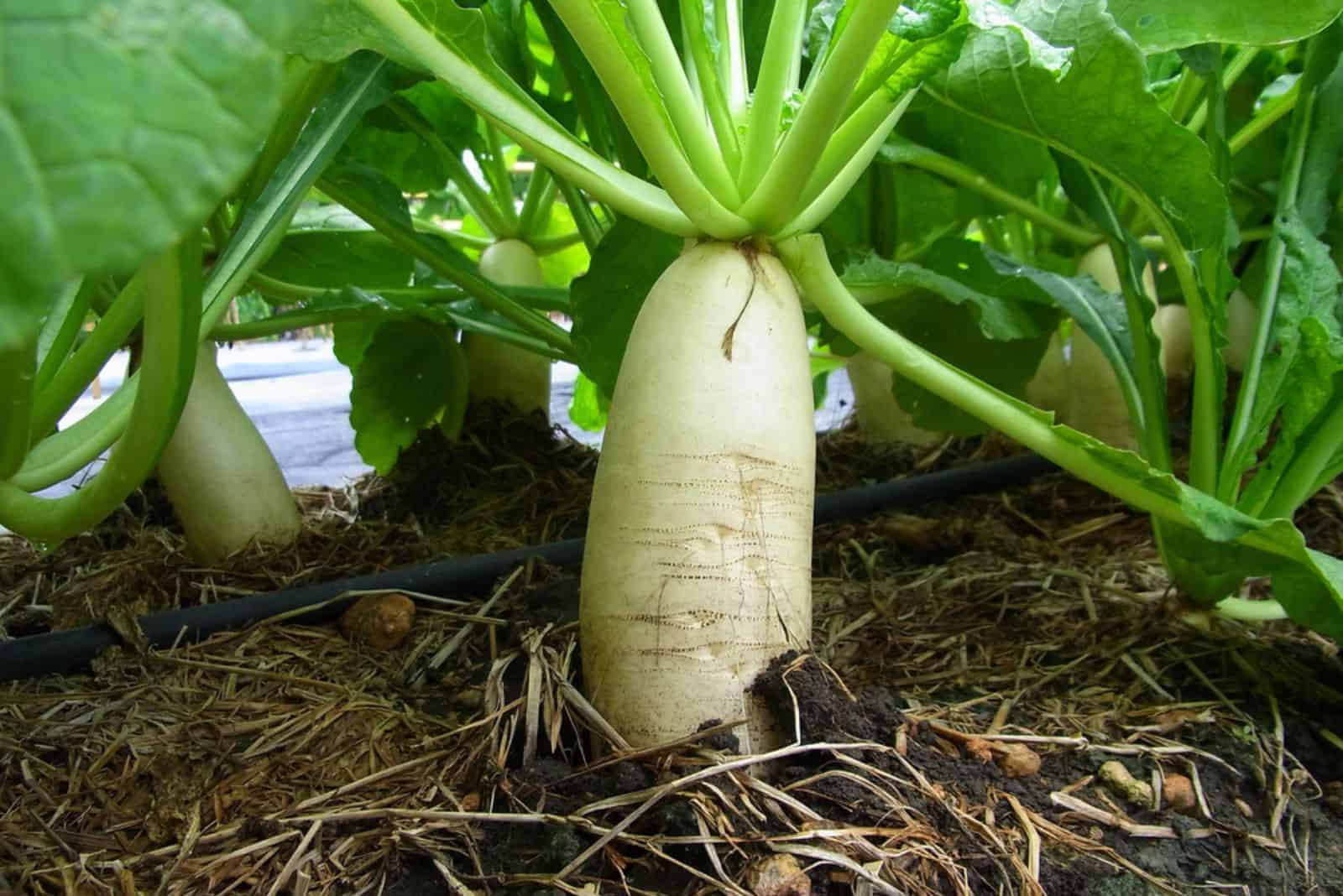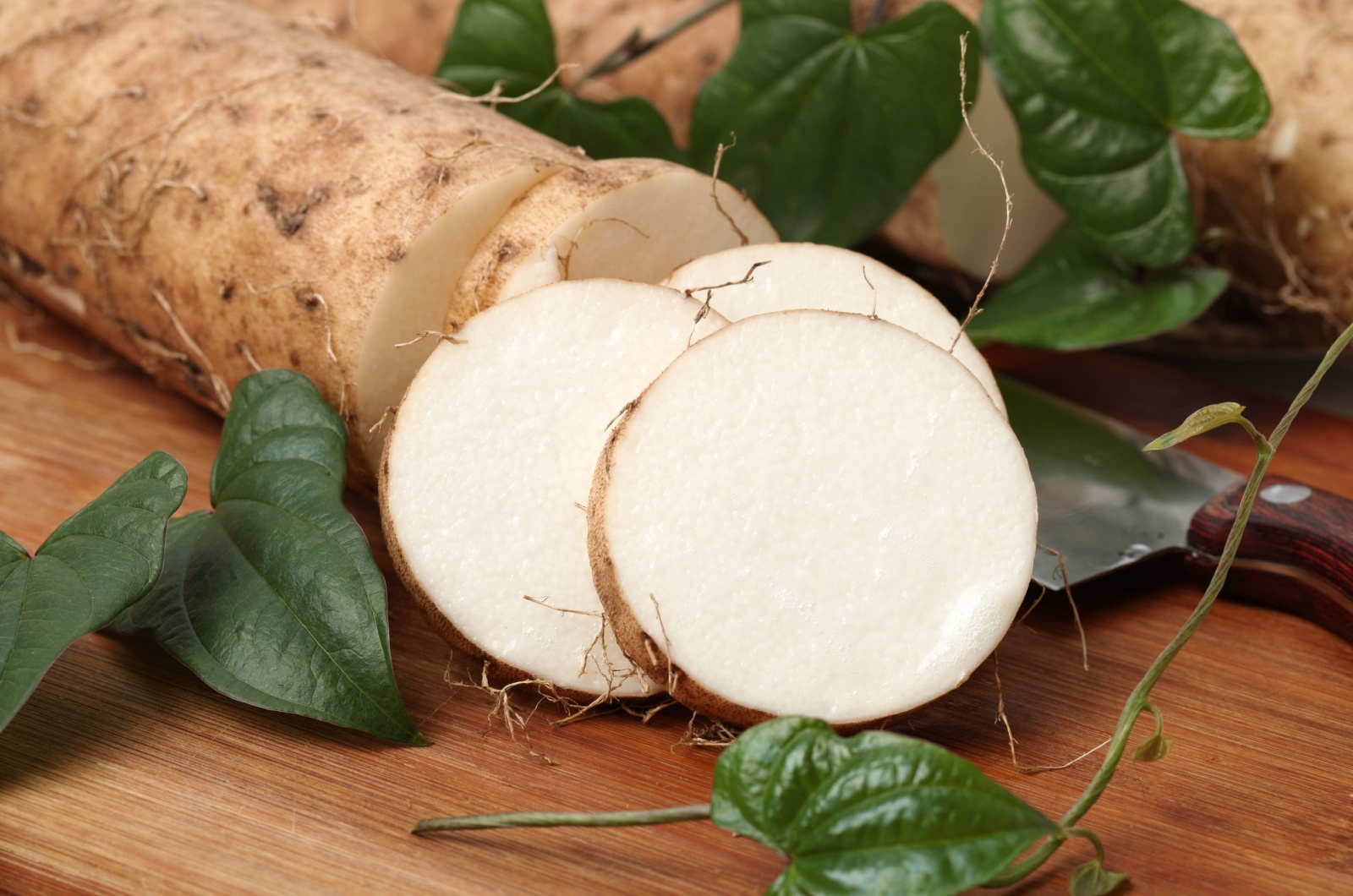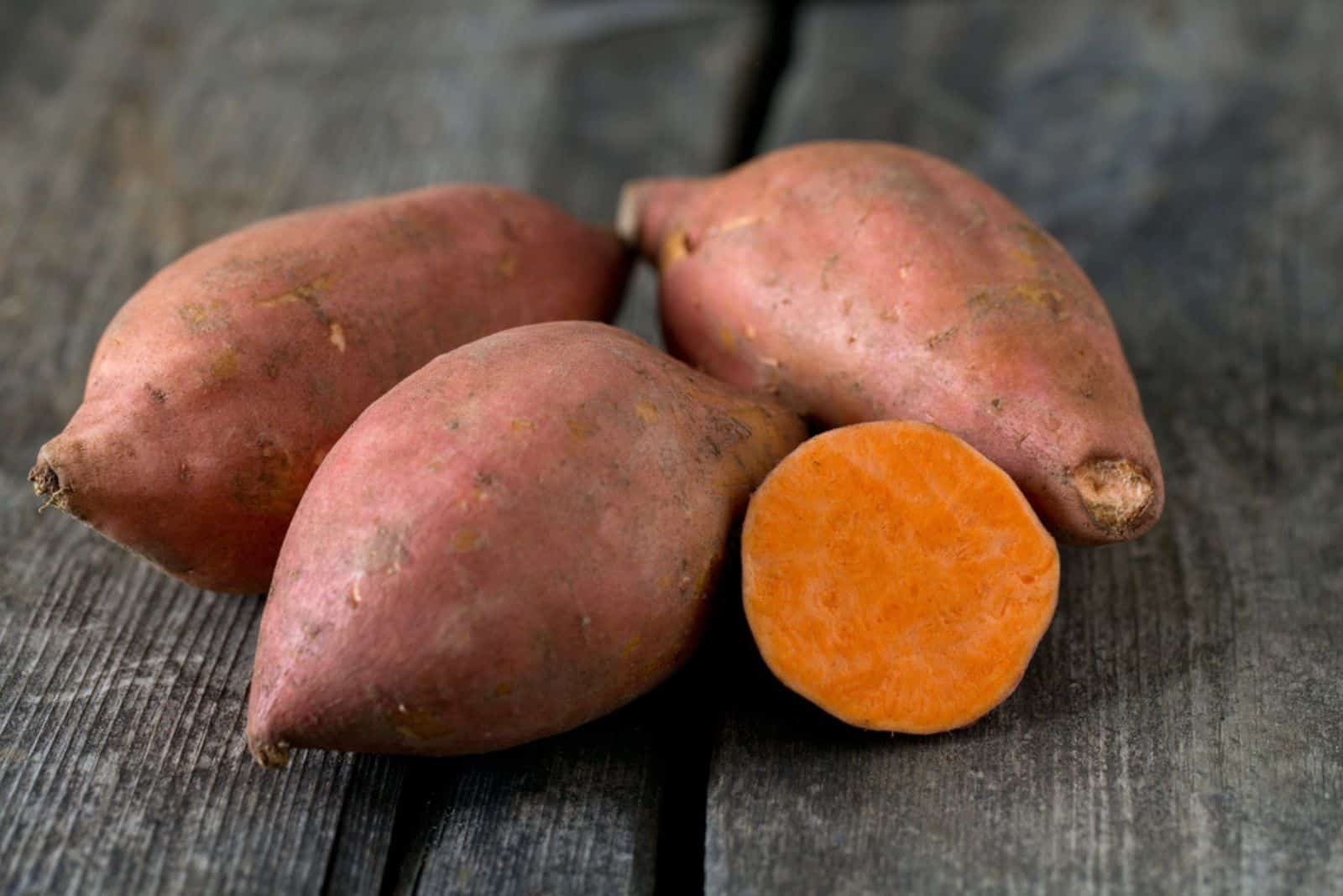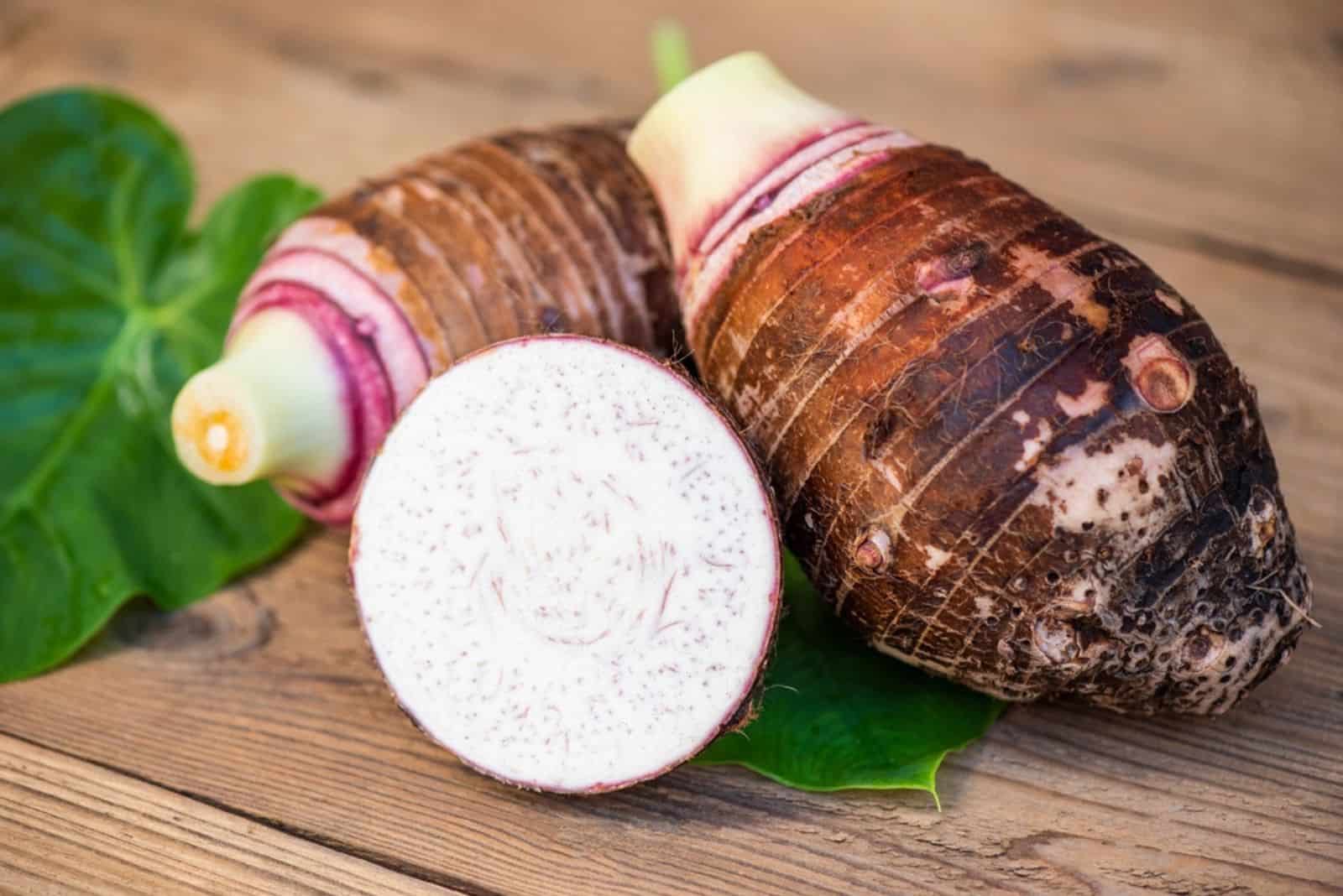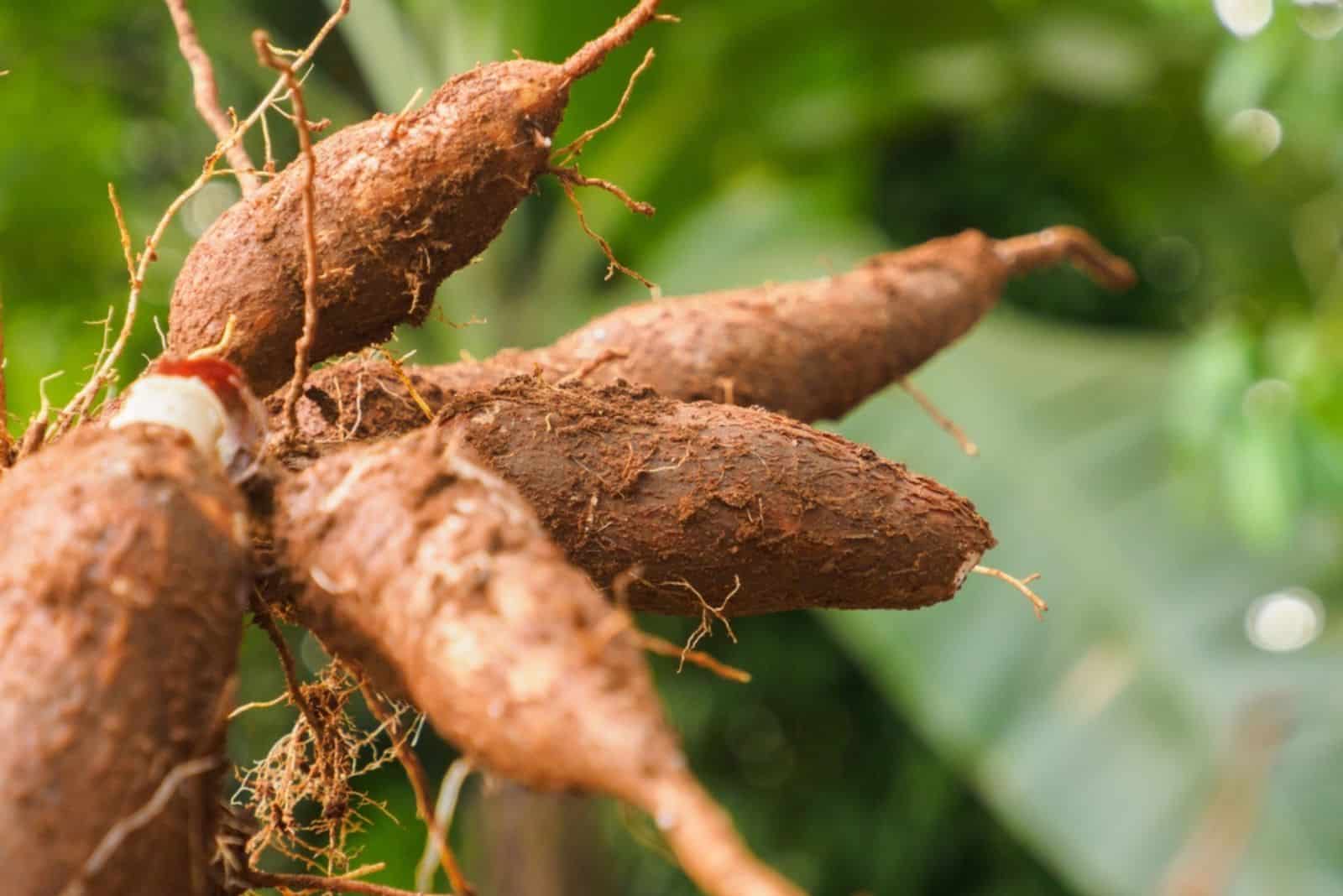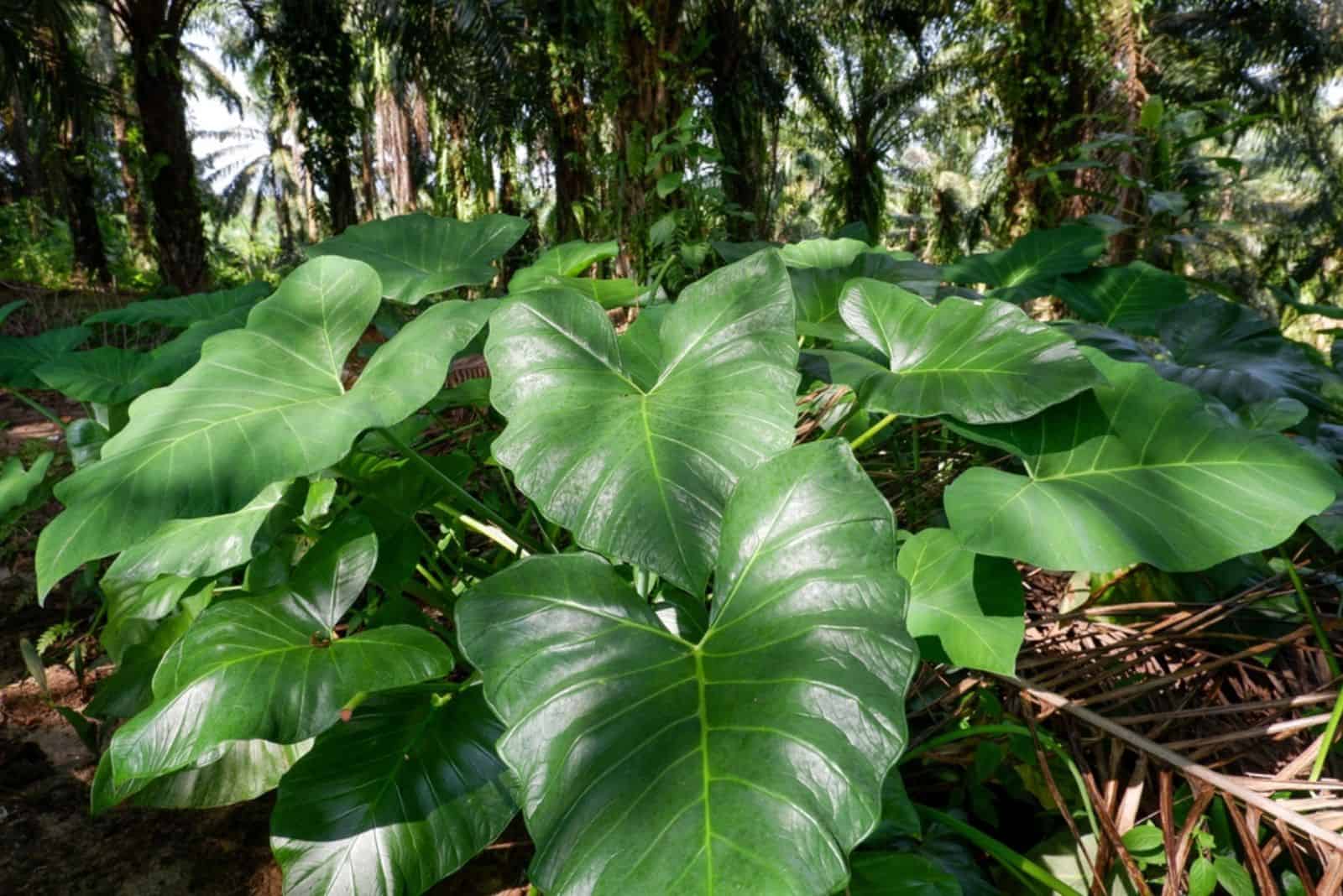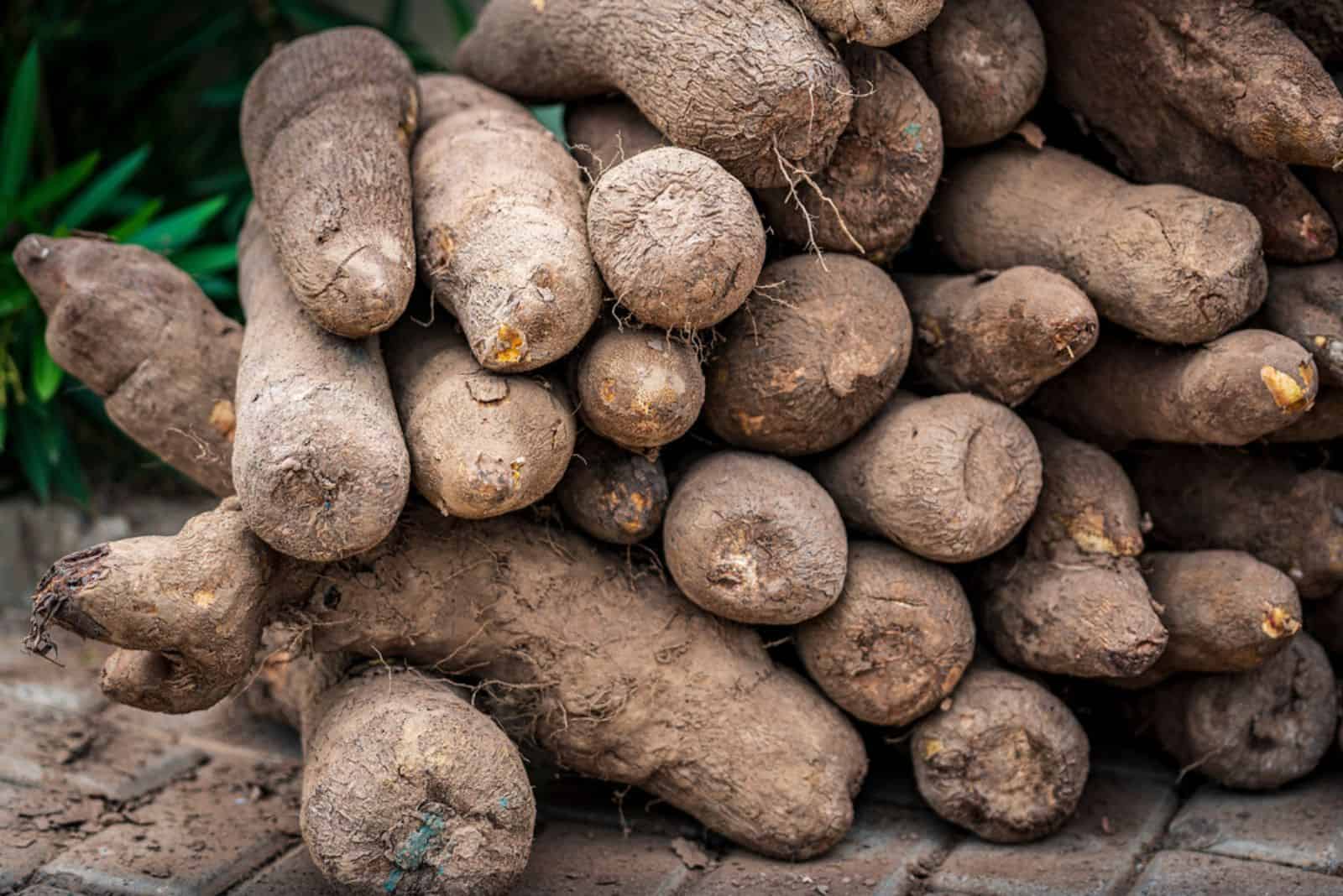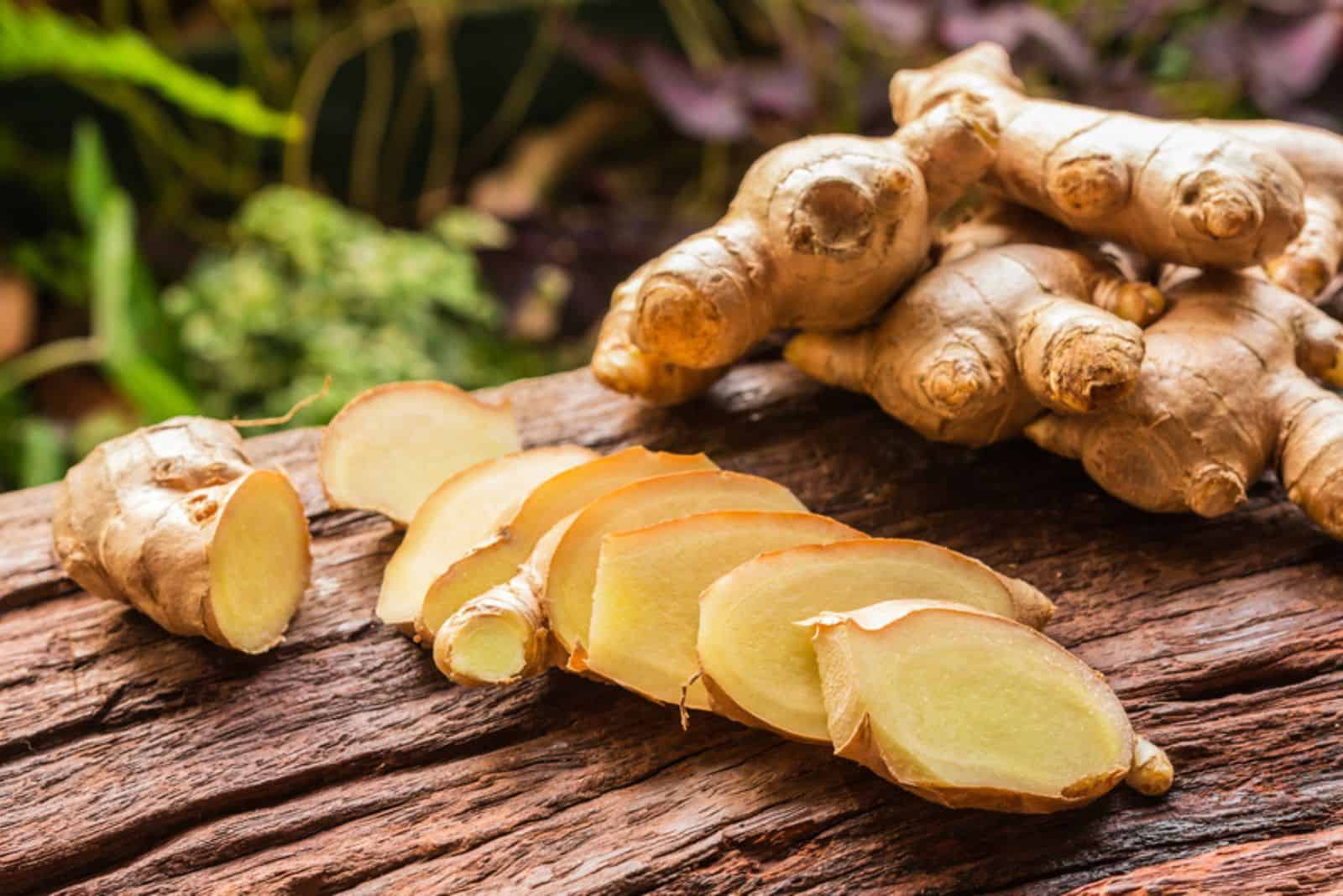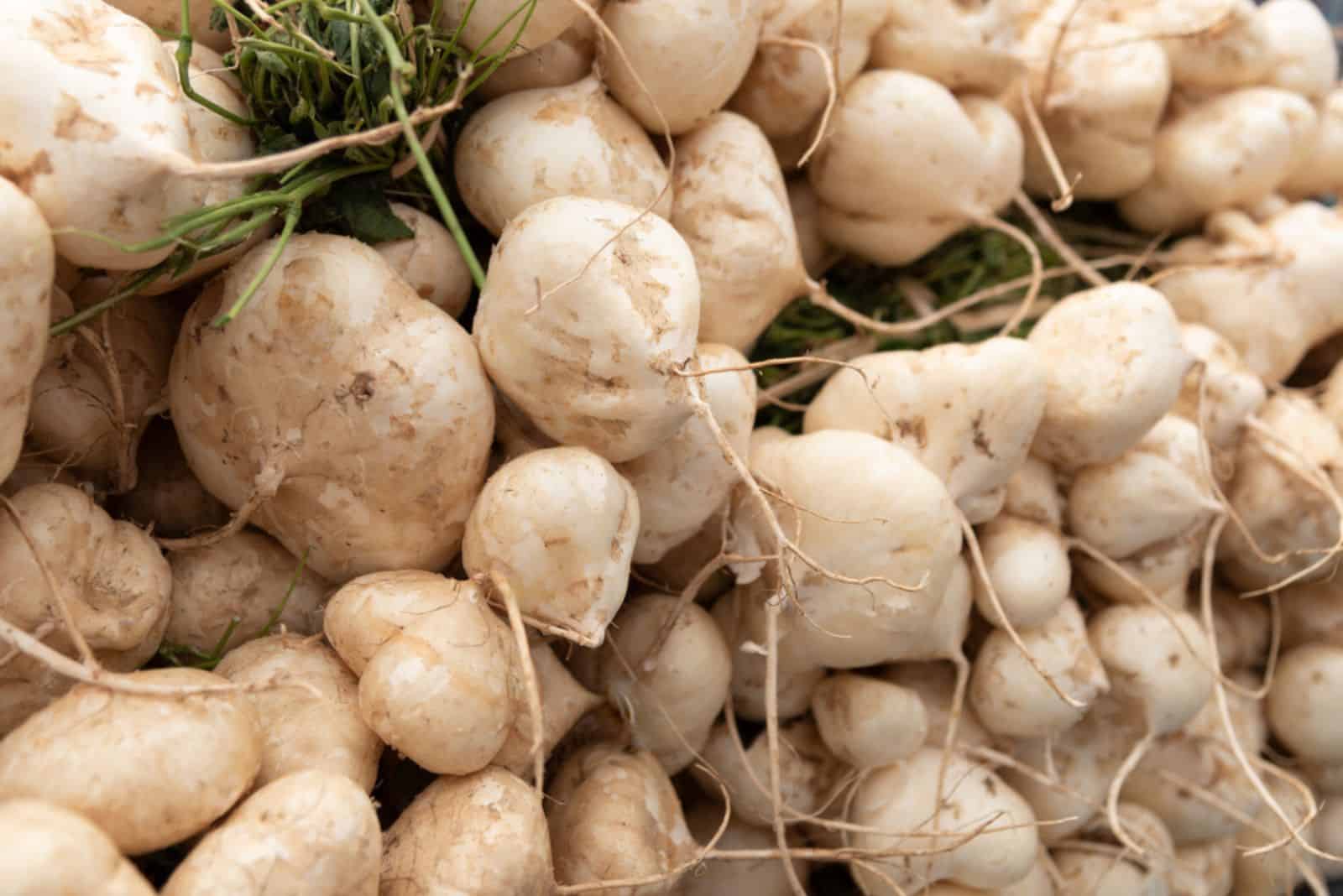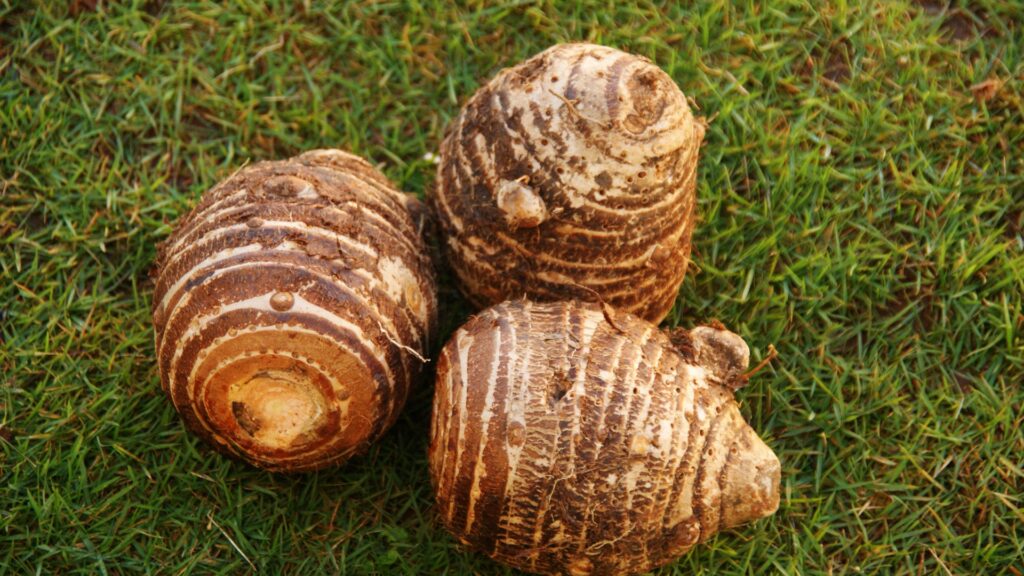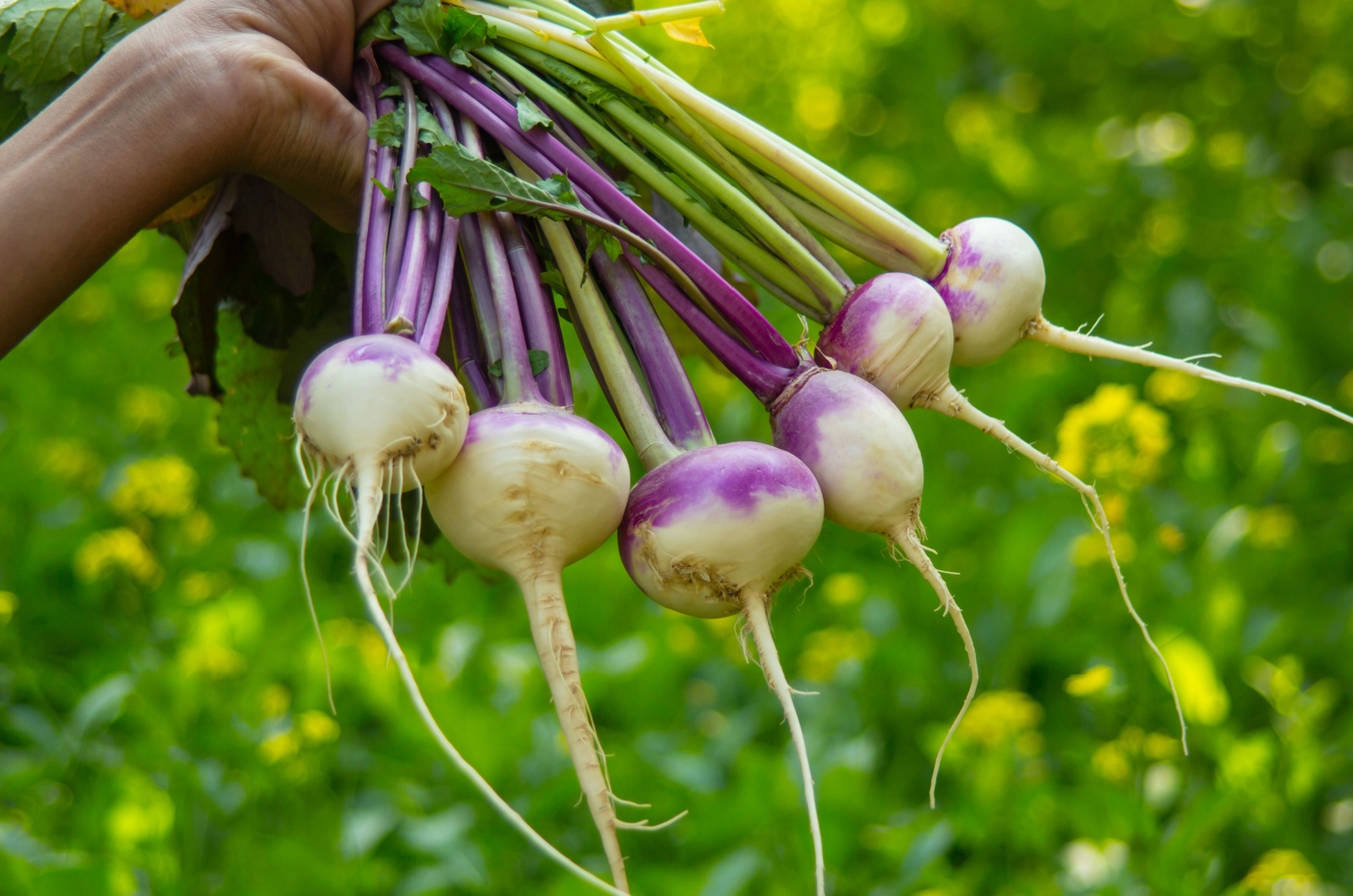Vegetables have various health benefits, so growing them in our home gardens is always an excellent idea.
Leafy greens, cruciferous veggies, and marrow are some examples of these tasty foods.
Vegetables grown under the ground use a lot of nutrients from the soil and consequently have many health benefits.
In this article, I’ll show you 27 cool- and warm-season veggies that are grown below the soil line and give you some tips for growing them.
Cool-season Underground Vegetables
Hardy- and semi-hardy cool-season veggies are ready to be planted in early spring. Lower temperatures in the soil won’t inhibit the germination process, so you can sow the seeds directly in the ground.
Here are some of the best cool-weather veggies that are grown underground!
1. Potatoes (Solanum tuberosum)
If you live in USDA hardiness zones 3 through 10b, then potatoes are the perfect vegetable for you. These veggies grow under the ground and need a lot of time to mature, but since they taste so good, it’s worth the wait!
The life cycle of potatoes starts with planting seed potatoes (sliced potatoes with developed eyes) in the ground approximately a month before the last expected frost.
If you are impatient, you can grow varieties such as Mountain Rose and Red Norland because they mature in early summer.
For those who live in rainy areas, I suggest you wait until the soil dries out a little bit before planting because the tubers of the Solanum tuberosum plant can’t develop in soggy soil.
2. Carrots (Daucus carota)
Prized for their exceptional health benefits (1), carrots are easy-to-grow, cool-season veggies. You can either grow them from seedlings or sow the seeds directly in the ground.
I thought that the seedling option was easier, but I never looked back after trying the seed method.
Carrots grow under the ground and need fertile soil to thrive. Adding compost prior to planting carrots is the best way to ensure they get the nutrients the require. Also, always plant carrots in full sun in order to encourage healthy development.
Some of the best varieties to grow are Bolero and Danvers.
Here are some more tips on growing carrots in your home garden:
https://www.youtube.com/watch?v=ttKbPzeadNw
3. Parsnips (Pastinaca sativa)
Have you ever tasted roasted parsnips? If not, I think it’s time! This is another root veggie (2) and is a close cousin of the Daucus carota species.
Parsnips are biennial plants that can be successfully grown in USDA hardiness zones 2 through 9.
Similarly to other veggies that grow underground, parsnips need a lot of nutrients and take up to 100 days to mature. The site needs to be rock- and weed-free or the crops will either fail to mature or be deformed.
Basil makes an excellent companion plant for parsnips because it repels most common garden pests.
4. Beetroot (Beta vulgaris)
Beetroot, or beets, are becoming more and more popular because of their amazing health benefits. (3)
This is another biennial plant grown primarily for its taproots under the ground. The roots are meaty and typically the size of a golf ball when they’re ready for harvest.
Beets are cold-tolerant veggies that you can plant directly in the ground to avoid disturbing the roots.
The best variety for eating raw is the Avalanche, whereas Cylindra is my recommendation for pickling.
Here’s a video on how to grow and harvest plenty of beets:
https://www.youtube.com/watch?v=p5nAL_mPLbc
5. Kohlrabi (Brassica oleracea Gongylodes Group)
Now we’re going to look at a veggie that grows under the ground but isn’t classified as a root vegetable; kohlrabi, a delicious crop from the Brassica family.
The underground structure of this vegetable is actually a bulbous stem.
The Kohlrabi can germinate at 45 degrees Fahrenheit, so you can plant it in early spring. If you live in USDA hardiness zones 3 through 9, consider adding kohlrabi to your veggie garden.
Make sure the soil for this veggie is free-draining, nutrient-rich, and slightly acidic.
6. Garlic (Allium sativum)
Garlic is one of the most popular root vegetables ever! It’s mainly grown for food but it has many benefits for gardens.
Interestingly, garlic isn’t grown from seeds like other veggies, but rather from its cloves. Garlic growth begins with the germination of cloves and ends with a formation of a bulb.
You can choose between hardneck and softneck types. The first are typically planted in the fall, whereas the second are better for spring planting.
Hardneck garlic types must go through vernalization (4) and if planted in spring, you need to assist in that process. If you are a beginner, I recommend planting them in the fall or going with softneck varieties.
7. Leeks (Allium porrum)
The long, blanche stems of leeks are what made this veggie a popular ingredient in many world cuisines.
Like its Allium cousins, leeks are a root veggie that take up the majority of their nutrients from the ground.
Adding compost or well-rotted manure is essential before planting in order to avoid nutrient deficiency and a poor yield.
My favorite variety is Pandora, which can be harvested in the fall and throughout winter.
Here’s a video with some tips for growing leeks:
https://www.youtube.com/watch?v=Ocs_4Zlvx1s
8. Onion (Allium cepa)
Allium cepa is one of the best veggies to grow underground and taste incredible!
This vegetable isn’t only used in cooking, but also as a companion plant because of its strong smell.
Onion roots are often used in scientific research to examine Allicin.
The good thing is that this vegetable is easy to maintain as long as it has a lot of full sun and gets nitrogen-rich fertilizer twice a month during the growing season.
9. Jerusalem Artichoke (Helianthus tuberosus)
Jerusalem artichoke, sunchoke, or wild sunflower are all nicknames for the tasty Helianthus tuberosus.
This root veggie thrives in USDA zones 3 through 9 and needs a little care to produce an abundance of crops.
What I especially like about sunchoke is its lovely blooms. If you decide on growing it, you’ll get a delicious crop and a beautiful garden.
A free-draining and fertile soil, as well as a spot with the full sun, will encourage your wild sunflower to reach its final growth stage in about 3 months.
Here’s a video on how to grow Jerusalem artichokes:
https://www.youtube.com/watch?v=0MTjqwghYMA
10. Oca (Oxalis tuberos)
You definitely won’t hear about oca as often as you hear about other root veggies, unless you are in the Andes. That’s because this crop is used similarly to potatoes there.
When I first tasted a salad with oca in it, I thought it was lemon! Now, I use it in almost every salad and also grill it.
This veggie performs best in USDA zones 7 through 9. If you live in a colder zone, simply harvest the crops, store them in a cool spot, and plant them again the following season.
11. Turnip (Brassica rapa)
The underground structures of turnips are classified as bulbous taproots. They’re suitable for cultivation in USDA zones 2 through 9.
These veggies are generally easy to maintain, just remember to keep their soil moist all the time. One of the best ways to enhance water retention is by putting a layer of mulch around the base of the plant.
Turnips make excellent companion plants because they serve as trap crops, i.e., the pests feed on the turnip’s foliage instead of other plants.
12. Mashua (Tropaeolum tuberosum)
Mashua is another tuberous vegetable grown under the ground. Similarly to oca, mashua is found in the Andes and used in many delicious dishes.
Is it possible to grow this veggie in home gardens? Yes, it’s possible and actually quite easy.
Interestingly, this Tropaeloum species thrives in various soil types, including poor ones. Additionally, it does great in shady spots as well as in the full sun.
Here’s a video on how to sow mashua tubers:
https://www.youtube.com/watch?v=NB4R9BDhrOY
13. Radish (Raphanus sativus)
Radishes are frequently found in vegetable gardens all around the world. The best thing about this vegetable is that it’s ready for harvest in less than a month.
Honestly, I can’t decide which part of the plant tastes best, and I like eating them both raw and cooked.
You can plant your Raphanus sativus plant anywhere in your garden. Since they don’t take long to mature, they can be planted near veggies that take a lot of time to mature, such as potatoes or beets.
14. Rutabaga (Brassica napus (Napobrassica Group))
If you haven’t heard of rutabaga, maybe the name “swede” rings a bell. This is another cool-season vegetable that grows underground.
Swedes do best in full sun and require fertile soil. They need approximately 3 months to mature, and grow and taste best if started in spring.
The essential thing to do before you plant rutabaga is de-weed the site and keep it that way until the plant finishes all its growth stages.
Light frosts enhance the taste, but remember to harvest your swede before the first ground frost.
15. Horseradish (Armoracia rusticana)
The Armoracia rusticana is a root vegetable grown for its delicious roots, but they should only be eaten in small quantities because they’re toxic. (5).
So, the question is why would anyone grow or eat veggies that could potentially harm them?!
It’s because they’re easy to grow and taste amazing. And if you’re careful about how much you eat, nothing will happen to you.
Simply choose a spot with enough full sun, make sure the soil is fertile, and keep it moist. Remove all roots during harvest since these species are considered invasive.
Here’s a video about horseradish and how to plant it:
https://www.youtube.com/watch?v=voOc0XHWlok
16. Shallot (Allium ascalonicum)
Shallots are less common Allium plants, but their popularity seems to grow each day because of their exceptional health benefits. (6)
This root veggie does well in USDA hardiness zones 2 through 10. Just like their cousins, shallots require fertile, free-draining soil and a lot of direct sunlight.
Shallots are grown under the ground and develop bulbs that can be planted in the late fall when they’re still immature.
Caramelized shallots are by far my favorite dish made with these veggies.
17. Celeriac (Apium graveolens var. rapaceum)
I’m sure you instantly think of celery when you see the name “celeriac”. Interestingly, these two are separate species, albeit closely related.
This plant is classified as a root veggie, but it’s primarily grown for its hypocotyl (7) (or simply the part of the underground structure located between the roots and stalk).
Celeriac is typically grown from seeds, but they should be started indoors if you live in USDA zones below 7. It’s also important to harden off the seedlings, i.e., help them adapt to new conditions by taking them outside every now and then.
The soil for this type of veggie should be constantly moist, and you’ll need to feed it monthly with a triple 10 fertilizer.
18. Daikon (Raphanus sativus var. longipinnatus)
Also known as the Chinese white radish, daikon is another vegetable grown under the ground.
The roots of this Raphanus sativus cultivar weigh approximately 2 pounds, making it the heaviest vegetable on our list.
The growing requirements are similar to those of standard radishes, though you need to ensure more space in your garden because of the crop size.
Daikon has many health benefits, such as enhancement of weight loss, protection from chronic diseases, and a boost to the immune system. (8)
Warm-season Veggies
As the name suggests, warm-season vegetables need high temperatures and aren’t suitable for outdoor cultivation in colder climates.
Let’s look at some of the best warm-weather veggies grown under the ground.
1. Sweet potato (Ipomoea batatas)
The orange roots of the sweet potato are a trademark of this plant, though they can actually come in other colors, such as yellow, white, or purple.
Generally speaking, you can grow the batatas species if you live in USDA zones 8 and above, but the best yields are definitely found in zones 10 and 12.
The number of potatoes you’ll get per plant also depends on the zone, and you can get 10 sweet potatoes from just one plant in warmer climates.
The best way to get delicious and healthy sweet potatoes is by planting them in free-draining soil that’s rich in organic matter. Additionally, give your Ipomoea batatas a lot of sun to enjoy the best dishes. Here are some amazing recipes with sweet potatoes:
https://www.youtube.com/watch?v=8VT-ntw-B_U
2. Taro (Colocasia esculenta)
Wait, Colocasia is a vegetable?! Yes, some species, such as esculenta, are grown because of their edible and delicious corms that develop underground.
If you visit Hawaii or Micronesia, for example, you’ll notice this plant is consumed on a daily basis. It’s becoming more and more popular around the world, but there’s one catch; the species contains calcium oxalate crystals that are poisonous, and the only way to avoid it is by cooking the corms.
If you live in a zone with about 200 frost-free days, you can successfully cultivate taro in your garden.
Plant your esculenta in rich soil and keep it moist all the time.
3. Cassava (Manihot esculenta)
Manihot esculent, commonly known as cassava, is a tuberous vegetable native to South Africa.
It does taste delicious but must be processed and never used raw because it contains cyanide, which is a toxic substance and may be lethal if ingested even in small quantities. (10)
You can cultivate cassava if you live in a frost-free area where soil temperatures don’t drop below 60 degrees Fahrenheit.
This Manihot species is susceptible to overwatering, so free-draining soil is the first thing to ensure. You can work organic matter into the soil so that you don’t need to fertilize it later.
Here’s more information on planting and harvesting cassava:
https://www.youtube.com/watch?v=-Llt4Kut_-k
4. Arrowleaf Elephant Ear (Xanthosoma sagittifolium)
We’ve seen that some Colocasia plants are also grown for their edible roots. Another elephant ear plant grown for the same purposes is the Xanthosoma sagittifolium aka Arrowleaf elephant ear or American taro.
Interestingly, these plants are commonly grown indoors for ornamental purposes and many growers don’t know that the corms that form underground are edible.
Of course, indoor cultivation won’t give you the same result as outdoor cultivation.
Just like their cousins, Xanthosoma sagittifoliumn plants contain calcium oxalate crystals, so you must cook the corms before consumption!
Plant the corms in partial shade and free-draining, nutrient-rich soil.
5. Yam (Dioscorea spp)
First things first, yams aren’t a sweet potato! These plants belong to separate genera and therefore have distinct features.
Dioscorea species develop edible tubers underground. You can cook them in many ways and sometimes they’re used for flour or starch production.
These are warm-season crops that won’t grow if soil temperatures are lower than 70 degrees Fahrenheit.
Tubers can quickly rot if the soil is waterlogged, so make sure it’s free-draining and rich in vital nutrients.
Some of the most common varieties are D.alata, D.bulbifera, D.esculenta, and D. batatas.
6. Ginger (Zingiber officinale)
Even though Zingiber officinale is used as a spice or herb, it’s technically a vegetable because it forms rhizomes (roots) under the ground.
Ginger has many health benefits, such as reducing menstrual pain and controlling glucose levels, and is used in the treatment of arthritis, cancer, and gastric dysfunction. (11)
This is a warm-season crop that should be cultivated outdoors in USDA zones 9 and above.
Zingiber plants don’t like wet soils, and full sun can inhibit their growth. A spot with well-draining soil and partial shade will encourage healthy growth and enhance the taste of your ginger.
You can grow ginger in containers, and here’s a video showing more information:
https://www.youtube.com/watch?v=-mUeNy0rweM
7. Jicama (Pachyrhizus erosus)
The last veggie on our list is Pachyrhizus erosus, more commonly known as “jicama”. The roots of this plant are edible but all other parts are toxic, even the skin.
So, make sure you carefully peel the skin before using jicama roots.
The growing requirements of this Pachyrhizus plant are similar to those of potatoes, except it only thrives outdoors in USDA zones 10 and above.
Frequently irrigate your jicama, but never allow the soil to become soggy.
8. Malanga (Xanthosoma spp.)
Malanga is a lesser-known root vegetable, but it’s widely used in Caribbean, Latin American, and African cuisine. The tubers develop underground and have a nutty, earthy flavor when cooked.
This tropical plant thrives in USDA zones 8 and above, requiring a warm, humid environment with consistently moist soil. It prefers partial shade but can tolerate full sun if provided with enough water.
Malanga is often confused with taro, but it has a rougher, hairy skin and a slightly firmer texture. If you enjoy hearty, starchy vegetables, this one is worth adding to your garden.
9. Burdock Root (Arctium lappa)
Burdock root is a popular vegetable in Asian cuisine and traditional medicine, prized for its earthy flavor and numerous health benefits. The long, slender roots grow deep into the soil and are typically harvested in their first year.
This plant thrives in USDA zones 4 through 9, preferring loose, well-draining soil to accommodate its deep roots. The growing site should be free of rocks to prevent deformities in the roots.
Burdock root is often used in soups, stir-fries, and teas. If you want a vegetable that doubles as a medicinal plant, burdock is a great addition to your garden.
Wrapping Up
Veggies have a lot of health benefits and aren’t hard to cultivate. There are various species and cultivars of these plants, and it can often be difficult to choose the right one.
You’ve seen some of the tastiest vegetables that are grown in the ground. They absorb nutrients mainly from the ground, making them super nutritious.
Pay attention to the hardiness and growing conditions for each vegetable you intend to grow. Follow our guidelines to get your best yield so far!
Until next time!
References
1. Varshney, Khyati & Mishra, Kirti. (2022). An Analysis of Health Benefits of Carrot. International Journal of Innovative Research in Engineering & Management.
2. Pither, R. (2005). FOOD AND NUTRITIONAL ANALYSIS | Vegetables and Legumes. Encyclopedia of Analytical Science (Second Edition)
3. Chen, L., Zhu, Y., Hu, Z., Wu, S., & Jin, C. (2021). Beetroot as a functional food with huge health benefits: Antioxidant, antitumor, physical function, and chronic metabolomics activity. Food Science & Nutrition.
4. Wu, C., Wang, M., Dong, Y., Cheng, Z., & Meng, H. (2015). Growth, bolting and yield of garlic (Allium sativum L.) in response to clove chilling treatment. Scientia Horticulturae.
5. Armoracia rusticana (Horseradish, Red Cole) | North Carolina Extension Gardener Plant Toolbox. (n.d.) https://plants.ces.ncsu.edu/plants/armoracia-rusticana/
6. Moldovan, C., Frumuzachi, O., Babotă, M., Barros, L., Mocan, A., Carradori, S., & Crişan, G. (2022). Therapeutic Uses and Pharmacological Properties of Shallot (Allium ascalonicum): A Systematic Review. Frontiers in Nutrition
7. McDonald, M. B., Copeland, L. O., McDonald, M. F. (2012). Principles of Seed Science and Technology. United States: Springer US.
8. Rd, J. K. M. (2019, October 7). What Is Daikon Radish, and What Is It Used For? Healthline.
9. Ma, Z., & Miyasaka, S. C. (1998). Oxalate Exudation by Taro in Response to Al. Plant Physiology
10. Ohio State University. (2003, May 14). Researchers Get To The Root Of Cassava’s Cyanide-producing Abilities. ScienceDaily. Retrieved March 19, 2023 from www.sciencedaily.com/releases/2003/05/030514080833.htm
11. Anh, N. H., Kim, S. J., Long, N. P., Min, J. E., Yoon, Y. C., Lee, E. G., Kim, M., Kim, T. J., Yang, Y. Y., Son, E. Y., Yoon, S. J., Diem, N. C., Kim, H. M., & Kwon, S. W. (2020). Ginger on Human Health: A Comprehensive Systematic Review of 109 Randomized Controlled Trials. Nutrients

